Lucca was our nearest and most favourite city this summer. We visited many other places but often ended up here and we got to know it better each time. This was my first photo in Lucca, in Piazza Anfiteatro – a ramshackle circuit of medieval buildings, it incorporates elements of the Roman amphitheatre that once stood here – and there’s always another photographer in the middle.
On our first visit we wandered aimlessly, just getting a feel of the place. We entered by one of the six gates, I think this is Porta Santa Maria, through the magnificent city walls, nowadays a tree-lined circular park around the city. Once inside I just followed my camera.
Piazza Napoleone
By the time Napoleon arrived in 1805, Lucca was edging up to her “modern inconsequence,” and the new emperor, his attention fixed more in the vicinity of Lord Nelson, gave the city to his sister Elisa, who set about widening the streets and adding neoclassical touches to Piazza Napoleone. When Marie Louise de Bourbon was given Lucca by the Congress of Vienna, she, perhaps not to be outdone, planted double rows of horse chestnut trees along its wall, creating two and a half miles of what (Henry) James called a “circular lounging-place of a splendid dignity.”
from Lucca: A Tuscan Treasure by Lorraine Alexander, Tuscany & Umbria: The Collected Traveler
※
San Michele in Foro
Head to the historical heart of Lucca and you come to the site of the Roman forum, now the square surrounding the church of San Michele in Foro, which has one of Tuscany’s most exquisite facades. The church is first mentioned in 795, but most of the present structure dates from between 1070 and the middle of the twelfth century.
from The Rough Guide to Tuscany & Umbria
San Michele, begun in 1070, is most famous for its remarkable facade, the base a strictly Romanesque series of rounded blind arches, above which rise four levels of intricately carved pillared galleries… By the time Ruskin happened upon San Michele the marble sculptures and intarsia were “in such a state of abandon that I felt obliged to draw them if only for fear that they would soon disappear.” Restoration began in the 1860s, with heroes of the Risorgimento, including the anticlerical Garibaldi, replacing the antique elements that are now displayed at Lucca’s Museo Nazionale at Villa Guinigi.
from Lucca: A Tuscan Treasure by Lorraine Alexander, Tuscany & Umbria: The Collected Traveler
※
San Frediano
The church of San Frediano, dedicated to Fredianus, an Irish-born saint and bishop of Lucca, is one of the most important Christian monuments in the city. Rebuilt in 1112-47 over the remains of a 6th-century basilica, it has a conspicuous tall campanile with Ghibelline crenellations, restored in 1853. The facade is unusual since the upper part is occupied by a large mosaic on a gold ground representing the Ascension (with the Apostles below) dating from the 13th century, and possibly the work of Berlinghiero Berlinghieri (also restored in the 19th century). Unlike the other ancient churches in Lucca, San Frediano is not oriented east-west , but has its apse at the west end. This was done at the time of the 12th century rebuilding, because of the cramped site up against the city walls.
from Blue Guide Tuscany by Alta Macadam
※
Torre Guinigi
The battlemented Torre Guinigi, south of Piazza Anfiteatro, is the strangest sight in Lucca’s cityscape. Attached to the fifteenth-century Casa Guinigi, town house of Lucca’s leading family, it’s surmounted by an ancient holm oak whose roots have grown into the room below. You can climb the 44-metre tower for a close-up of the tree and easily the best view over the city.
from The Rough Guide to Tuscany & Umbria
The Guinigi Tower is famous because of the seven ilex trees which grow on its summit (staircase to the top; 41m high). During the rule of Castruccio Castracani in the 14th century, the Guinigi were one of the richest families in Lucca, many of them involved in the silk trade. The family, who lived in the two large brick Gothic palaces facing each other nearby in Via Guinigi (nos. 20-22 and 29), continued to take an active part in the government of the city up until the 19th century. The last descendants of the family left the tower to the town of Lucca.
The view from the top offers a panorama of the city and its tree-planted walls, and the hills beyond.
To the south is the side of the duomo (Cattedrale di S. Martino) and the unusual dome of the baptistery of SS. Giovanni e Reparata;
farther to the right is the campanile of San Michele, behind the rear of its tall facade… Nearer at hand is the high medieval bell-tower in Via Fillungo.
To the north is the campanile of San Frediano, which stands beside the conspicuous mosaic on the church facade. Nearby, the oval shape of the amphitheatre
and the campanile and white colonnaded facade of San Pietro Somaldi can be seen; farther round is the white facade and rose window of San Francesco, near the castellated roof of Villa Guinigi.
from Blue Guide Tuscany by Alta Macadam
※
Luigi Boccherini, composer & cellist, born in Lucca in 1743.
Duomo di San Martino
It needs a double-take before you realize why the Duomo di San Martino looks slightly odd. The building is fronted by a severely asymmetric facade, its right-hand arch and loggias squeezed by the belltower, which was already in place from an earlier building. Nonetheless, the building sets the tone for Lucca’s other Romanesque churches, and little detracts from its overall grandeur, created by the repetition of tiny columns and loggias and by the stunning atrium, whose bas-reliefs are some of the finest sculptures in the city. The interior houses the city’s most revered relic, along with several painting masterpieces.
from The Rough Guide to Tuscany & Umbria
The very fine asymmetrical facade, with the right arch smaller to accommodate the splendid tall campanile with its Ghibelline battlements, is decorated with delightful sculptures in the Pisan Romanesque style peculiar to Lucca. Dating from 1204, it carries the signature of Guidetto da Como, whose family name was Bigarelli and who worked elsewhere in Tuscany, including Pisa and Pistoia. Above the three wide arches are three tiers of arcades with beautifully designed little columns, all with different decorations (scholars have seen them as the inspiration for those on the facade of San Michele). The statue of St Martin is a copy of the original, now preserved inside.
The beautiful sculptural decoration of the portico was begun in 1233, its exquisite decorative details made out of pink, green and white marble. Above the central door is the Ascension of Christ, with the Virgin flanked by the Apostles below. Bas-reliefs depict the story of St Martin and the months of the year. Over the left doorway is a relief of the Deposition, and under it a very crowded Annunciation, Nativity and Adoration of the Magi, thought to be early works by Nicola Pisano. Over the right doorway is the Meeting of St Martin with the Arians. Martin’s disputes against Arian heresy are one of the leitmotifs of his legend. In the lunette is the Beheading of St Regulus, an early bishop of Populonia executed by the Goths.
The symbolic labyrinth inserted in the right pier of the portico dates from the 12th century.
from Blue Guide Tuscany by Alta Macadam
※
We had lunch at the Local Food Market, a surprisingly un-Italian sounding restaurant tucked away in a hidden courtyard with an apparently magical microclimate where lemons grew to the size of melons.
※
At the Lucca Center of Contemporary Art (Lu.C.C.A.) there was a nice retrospective of photographs by Elliott Erwitt, but unfortunately we were not permitted to take photographs of the exhibition, which was a shame. Pictures of people looking at pictures of people can make twice times pictures of people.
※
Palazzo Pfanner
In Via Cesare Battisti… is Palazzo Pfanner. Built in 1667, it has a galleried outside staircase, and a little 18th century garden with a charming fountain and fine statuary.
The piano nobile has 17th century frescoes and is partly furnished…
from Blue Guide Tuscany by Alta Macadam
Just west of San Frediano is Palazzo Pfanner, whose gorgeous rear loggia, fountains and gardens dotted with eighteenth-century statues, also visible from the city walls, provide a gracious foretaste of the villas and gardens outside of the city.
from The Rough Guide to Tuscany & Umbria
A little further west along the city walls is San Giorgio prison, its walls inscribed with strange graffiti, echoing the bark patterns on the plane trees, like some kind of visual poetry or new musical notation.
It was here, in 1960, that jazz trumpeter Chet Baker was jailed for sixteen months on drug charges.
During those months, Chet is an avid composer, and it is told that on the walls of the city that run adjacent to the prison, groups of fans would gather to listen to the notes of his trumpet coming from within the prison.
from Jazz, Lucca and Chet Baker by Lucia Maffei
※
Orto Botanico
The most attractive part of Lucca’s eastern quarter is the Orto Botanico at the southern end of Via del Fosso, an extensive patch of green laid out in 1820 that neatly complements the ramparts. The rarer exhibits include medicinal plants, a sequoia, gingko tree, camphor tree and a cedar of Lebanon planted at the garden’s opening.
from The Rough Guide to Tuscany & Umbria
The Legend of Lucida Mansi
Lucida Mansi was born in Lucca on March 7th, 1606, into one of the richest and most powerful families in the Lucca area: the Saminiati. When she was still very young, she married Vincenzo Diversi, but soon she was widowed and then married the old and rich Gaspare di Nicolao Mansi.
Fully devoted to luxury and to an exciting life; she was adored, courted and extremely proud of her looks: people said she was even hiding a mirror in her prayerbook.
So time went by thoughtless among parties and lovers, till one morning, admiring herself in the mirror as usual, she noticed a light wrinkle on her extremely beautiful face. Lucida was desperate and wept bitter tears, till a handsome young man appeared in front of her. He was the Devil. He promised her thirty more years of youth, but after this time he would come back again to get his payment for this privilege: her soul. Lucida accepted with no hesitation, and the bonus years ran without any apparent ageing. But one summer afternoon, at the end of thirty years, the Devil came back to her. Lucida turned desperate and prayed to him to save her soul, but the Devil lugged her on his flaming carriage and, after a full tour on the City Walls to allow Lucca’s inhabitants to hear her harrowing screams, he sank with the chariot into this pond, the gem of the Botanical Garden.
The legend says that, if we dive in the pond, it is possible to see the face of Lucida Mansi sleeping in its depths. Besides, the same legend says that, just before midnight on every October 31st, in an absolute silence, a strong wind arises, a noise of horses’ hooves resounds in the air and it is possible to glimpse the burning carriage sinking into the pond, launched in an unbridled run towards hell.
Lucida actually died of plague on February 12th, 1649, and her remains were buried in the Lucca Capuchin friars’ church, very close to the Botanical Garden and later destroyed.
Ginkgo
Ginkgo biloba, known as ginkgo or gingko and also as the maidenhair tree, is the only living species in the division Ginkgophyta, all others being extinct. It is thus a “living fossil”, recognizably similar to fossils dating back 270 million years. Native to China, the tree is widely cultivated and was introduced early to human history. It has various uses in traditional medicine and as a food source.
en.wikipedia.org/wiki/Ginkgo_biloba
A reminder of M C Escher’s Three Worlds.
Cedar of Lebanon
Cedrus libani is a species of cedar native to the mountains of the Mediterranean region. There are two distinct types of Cedrus libani that are considered to be different subspecies or varieties:
– Lebanon cedar or cedar of Lebanon (Cedrus libani subsp. libani or var. libani) – grows in Lebanon, Israel, northwest Jordan, western Syria, and south central Turkey.
– Turkish cedar or Taurus cedar (Cedrus libani subsp. stenocoma or var. stenocoma) – grows in southwest Turkey.
en.wikipedia.org/wiki/Cedrus_libani
※



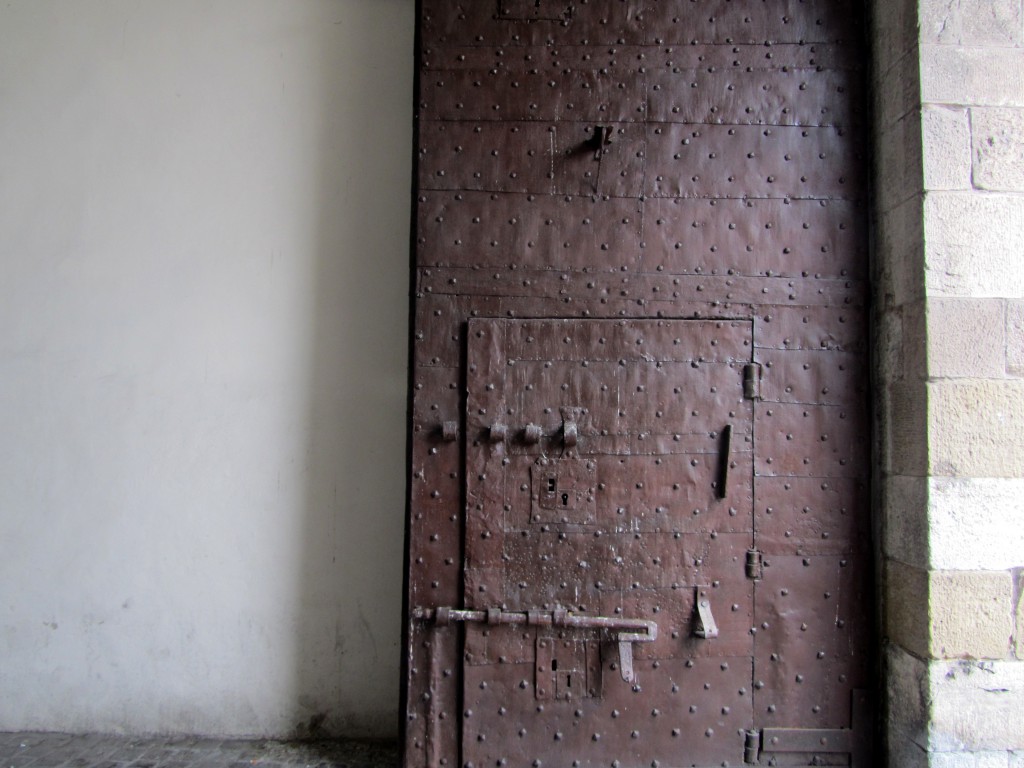


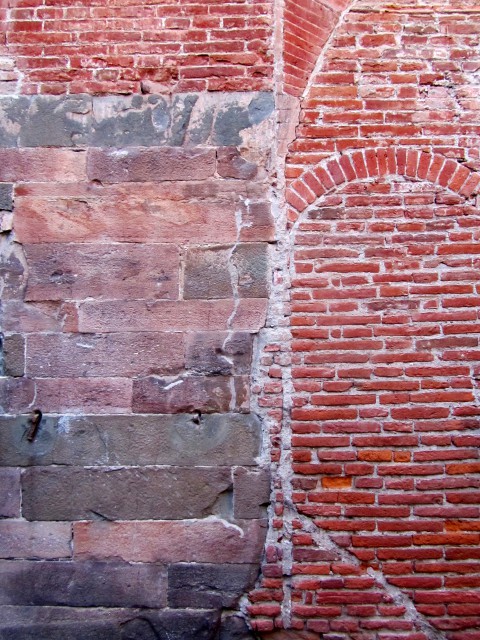
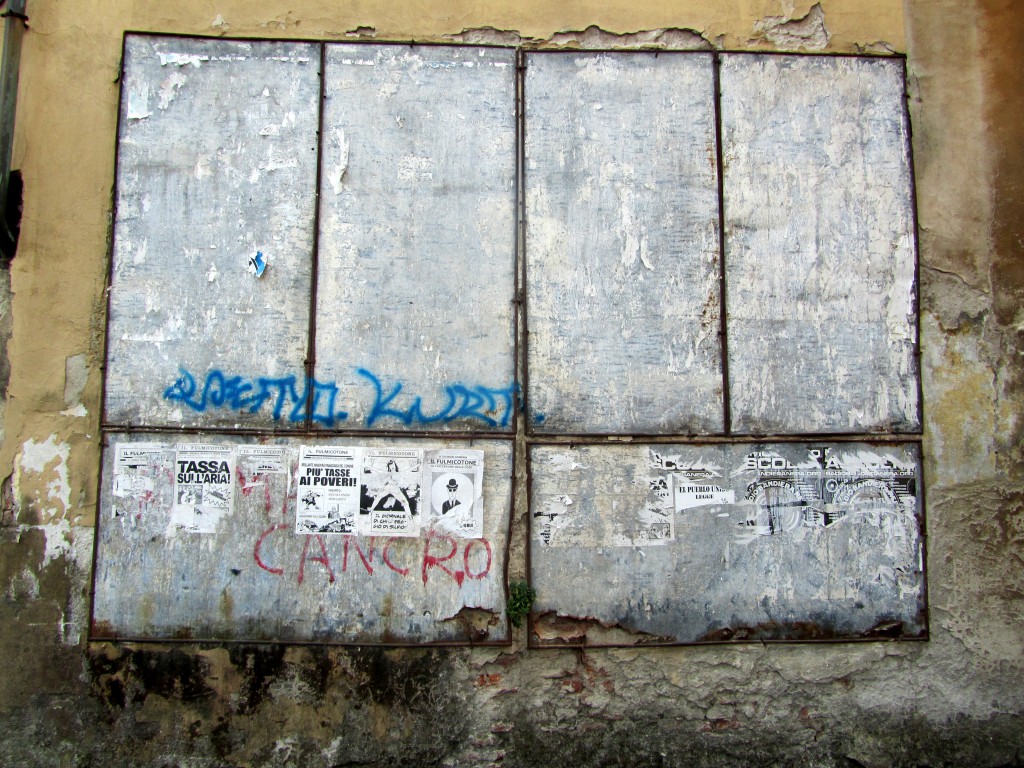



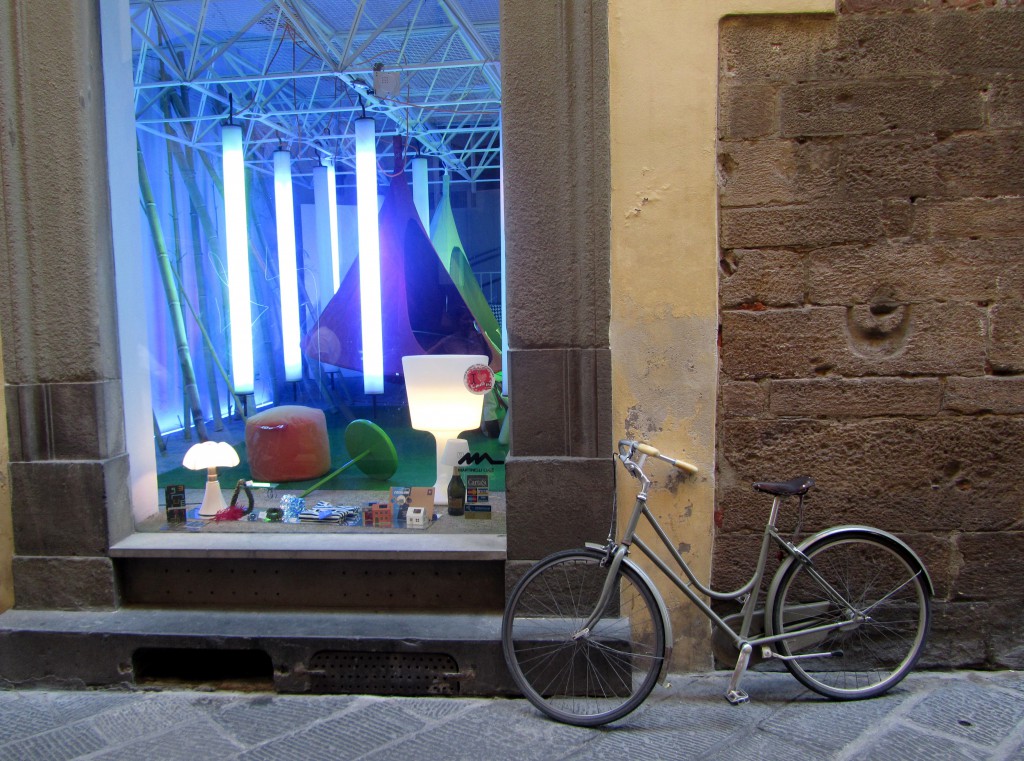
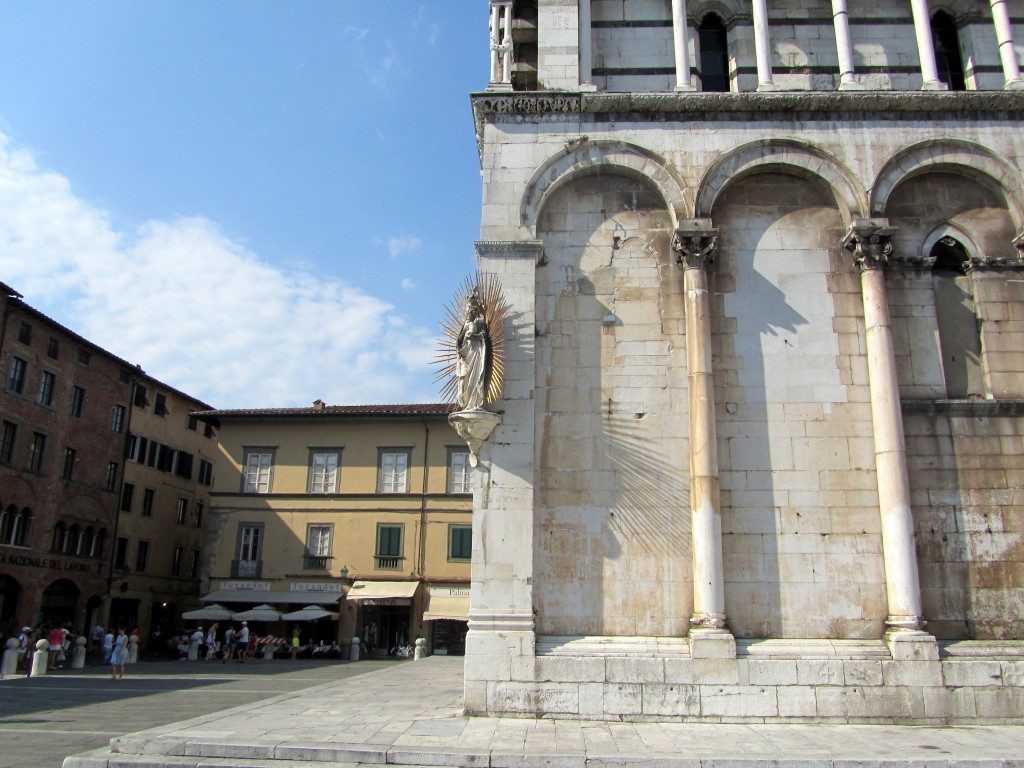
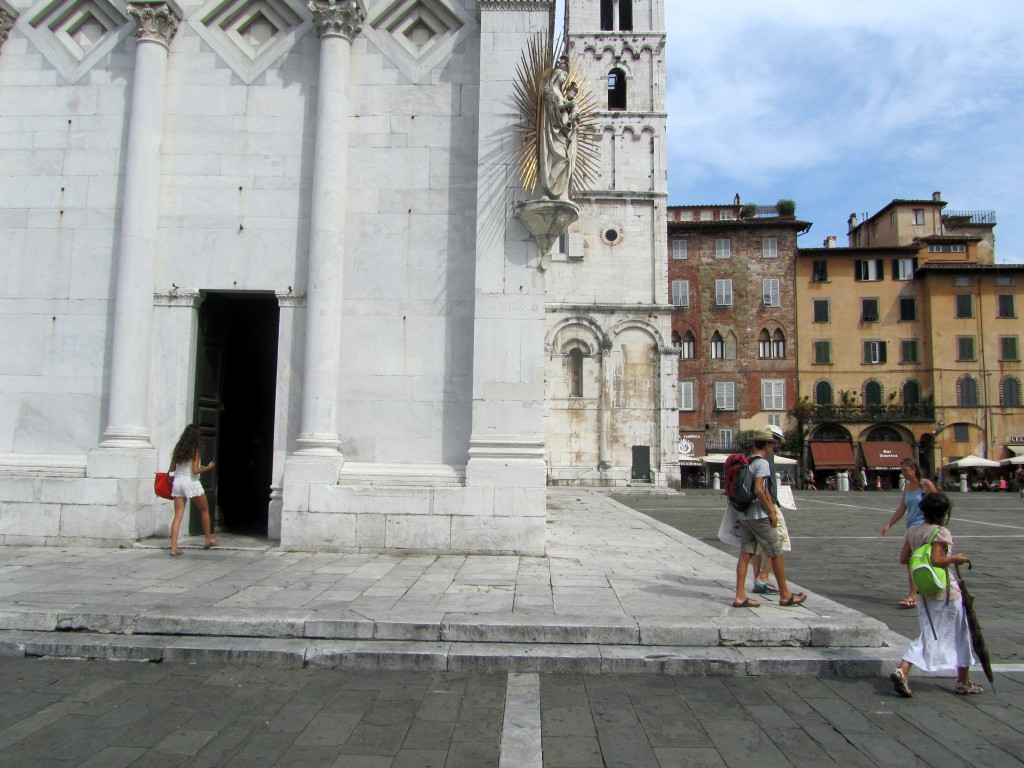

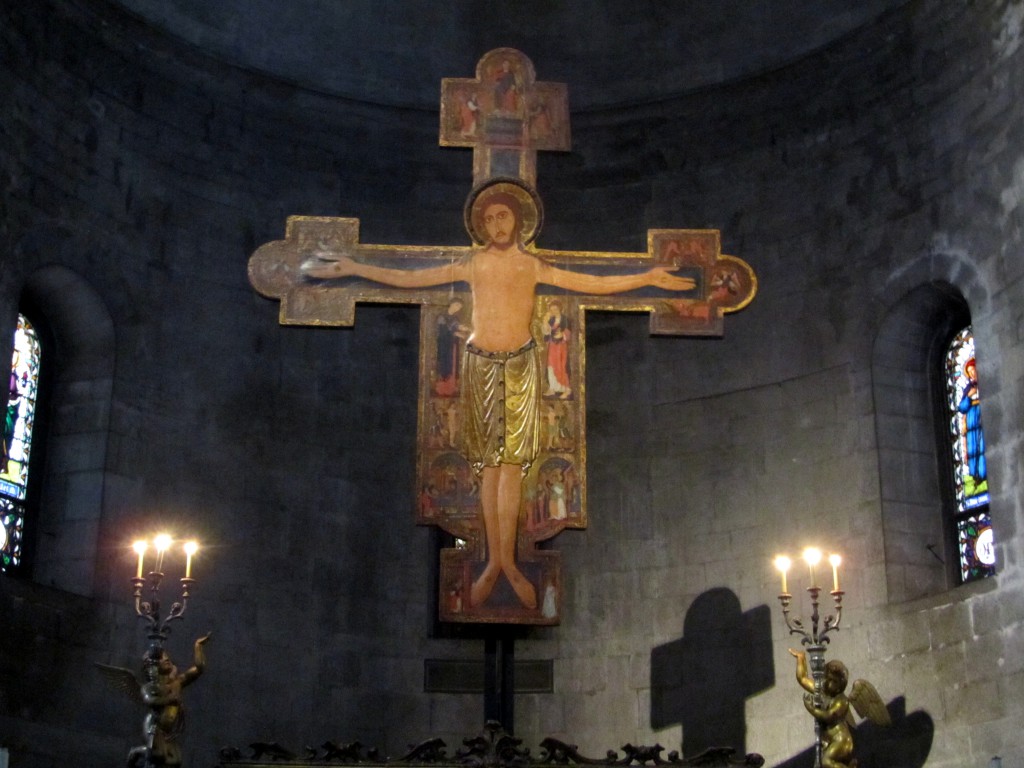


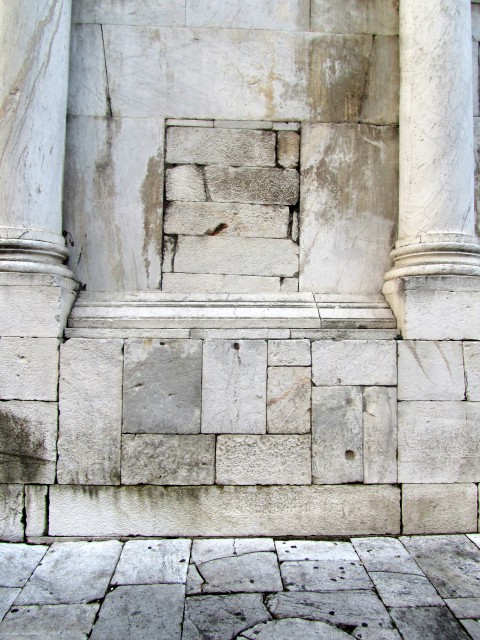
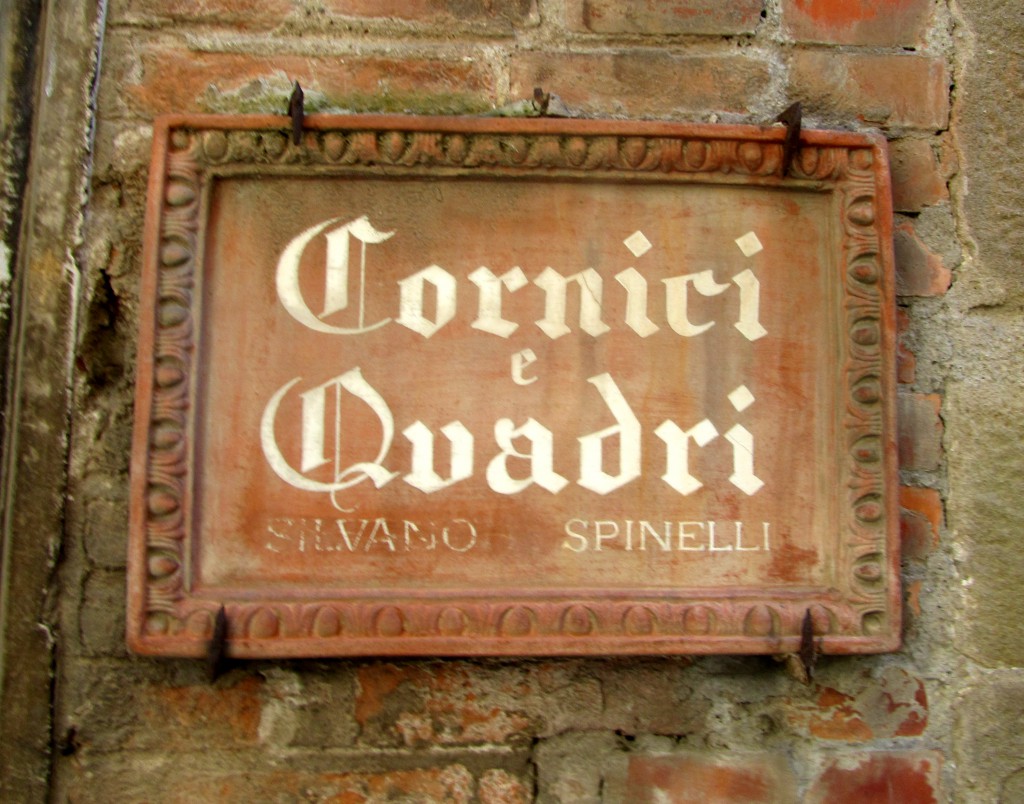

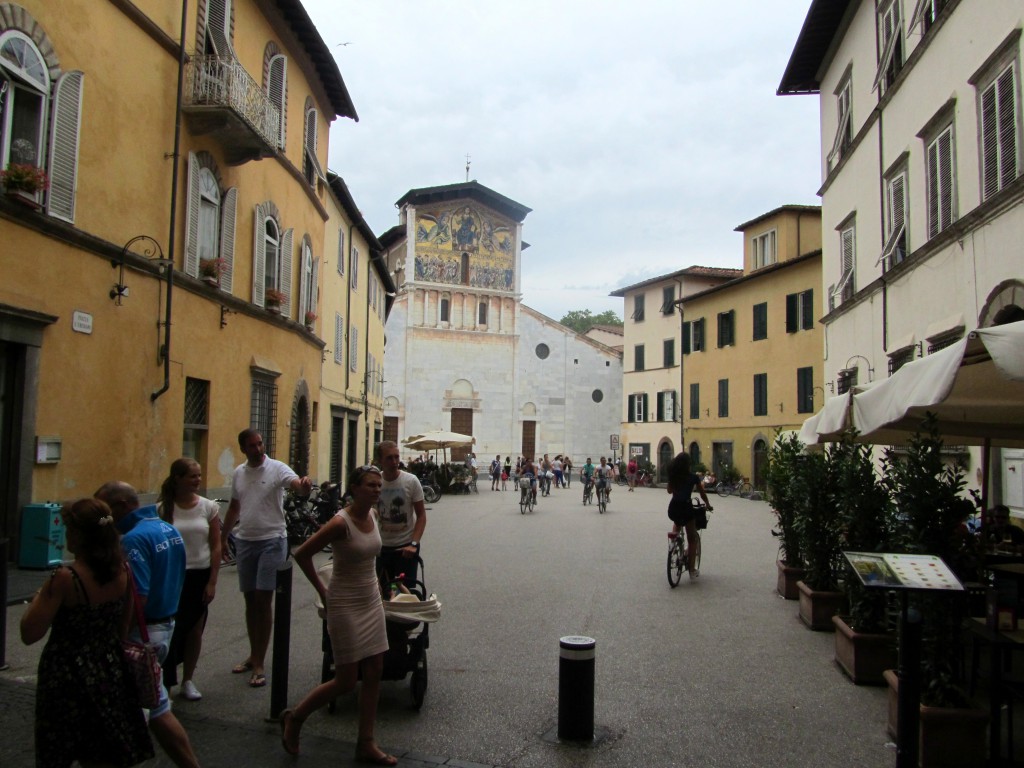

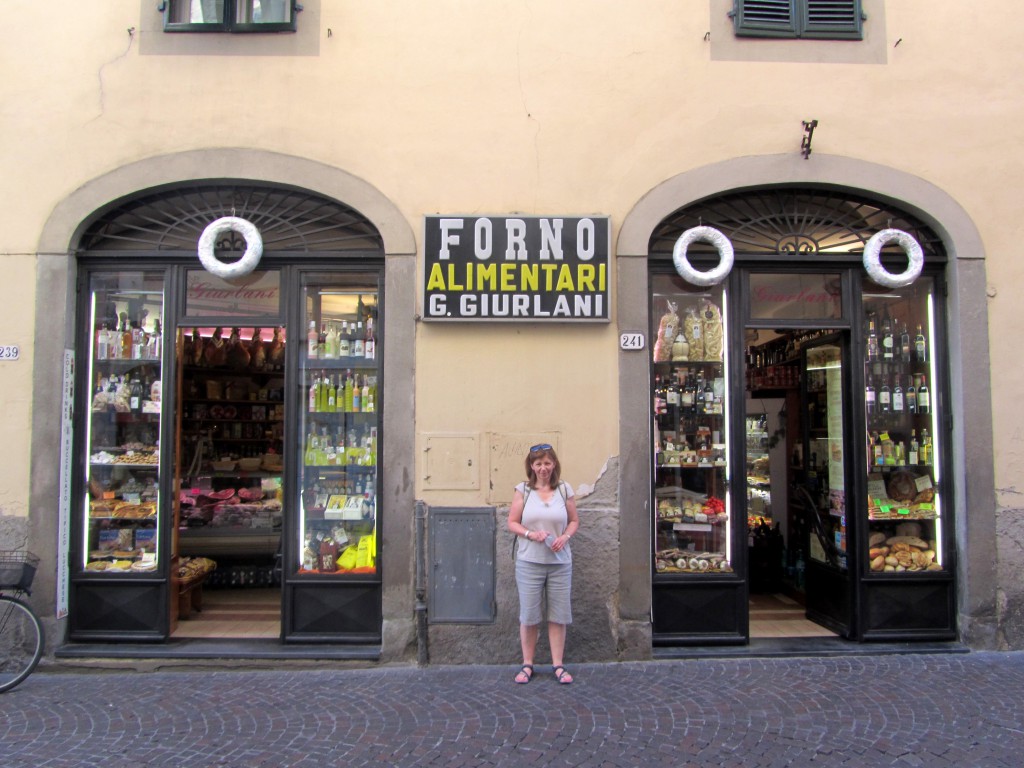

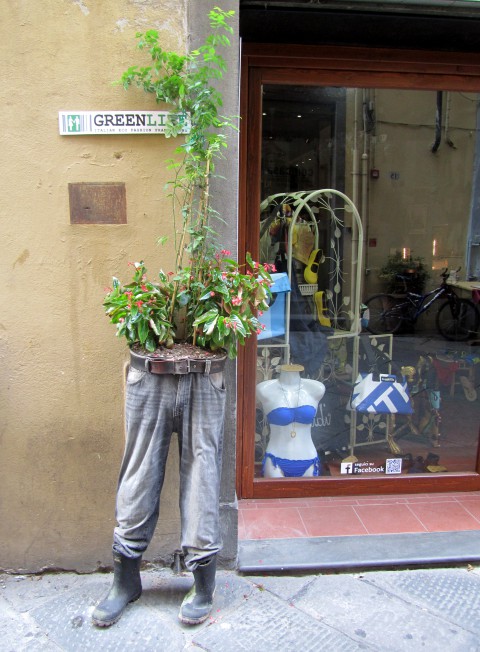
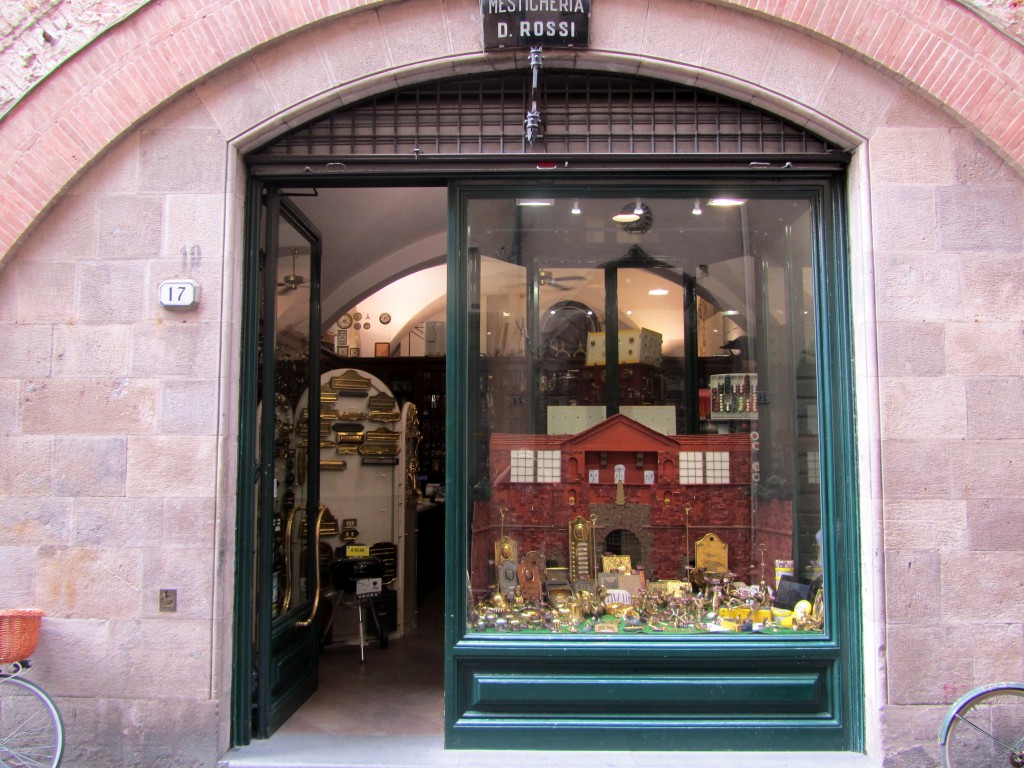

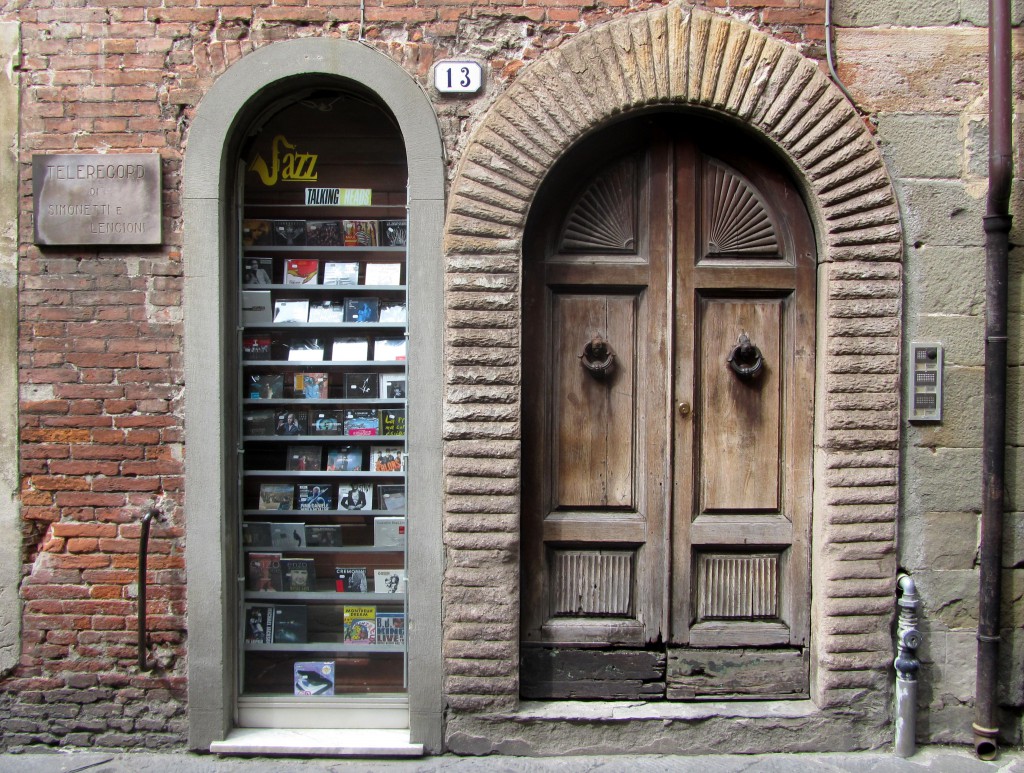
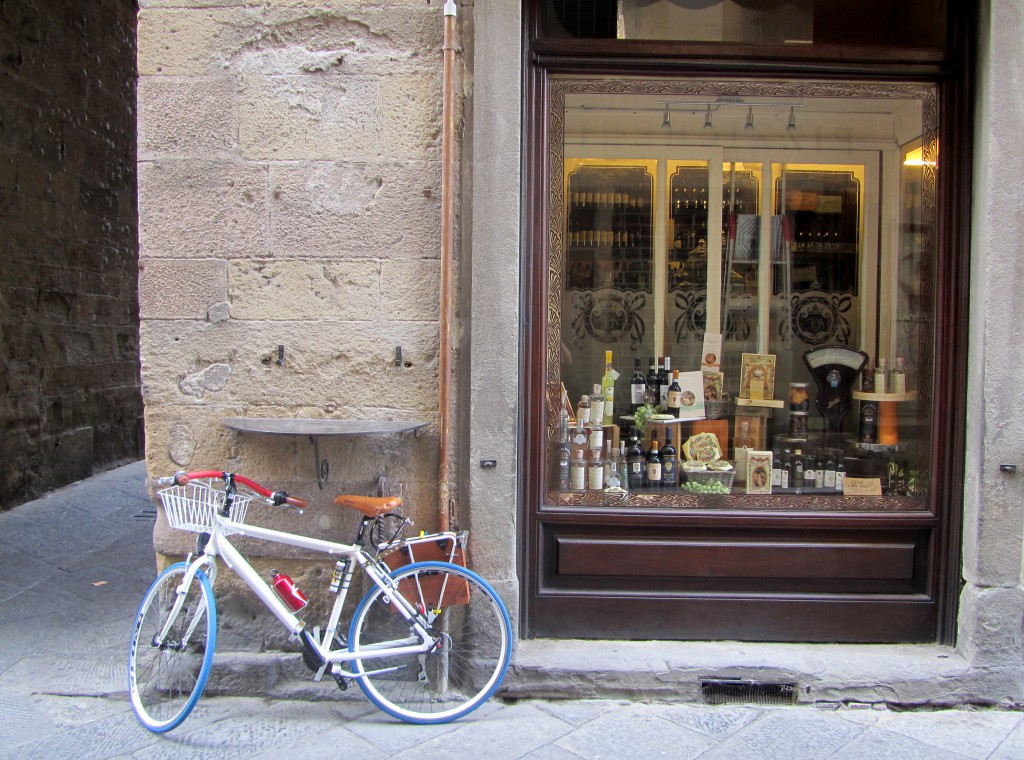

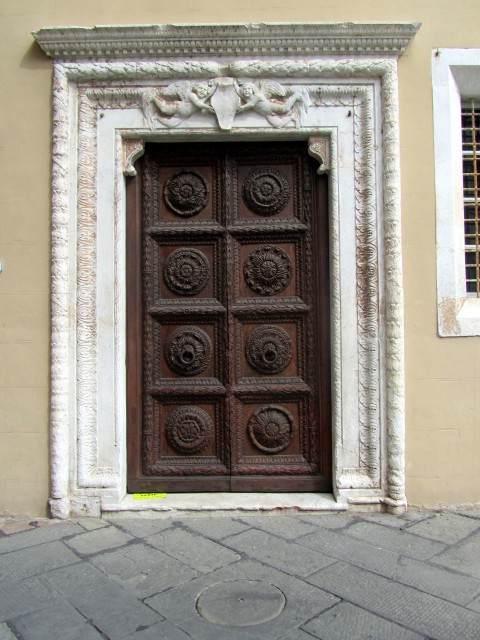
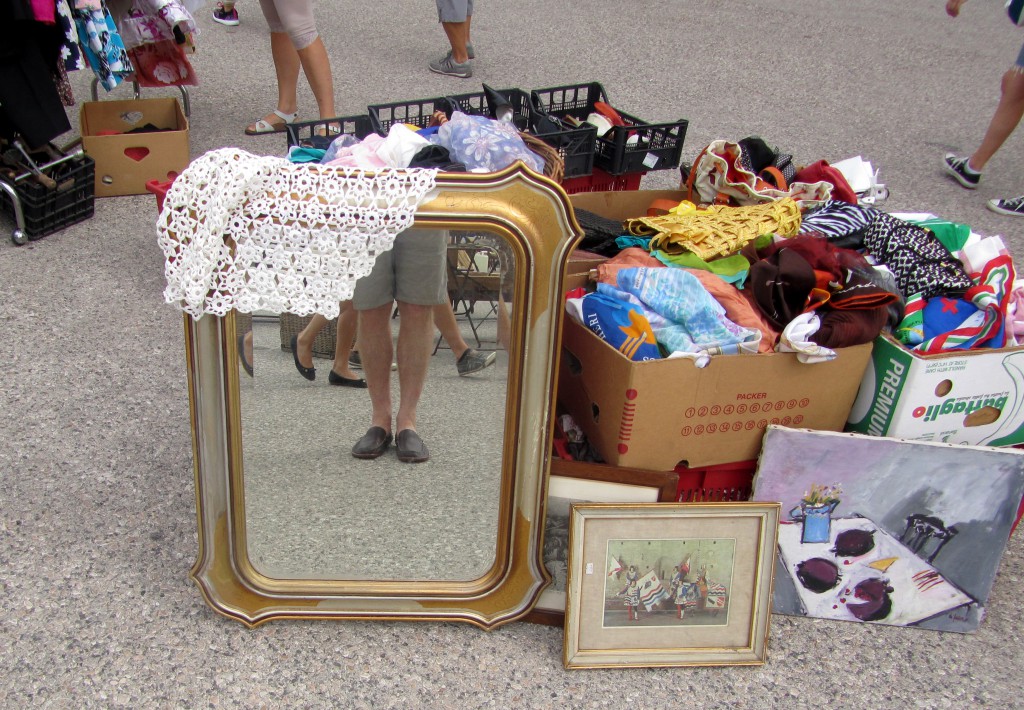


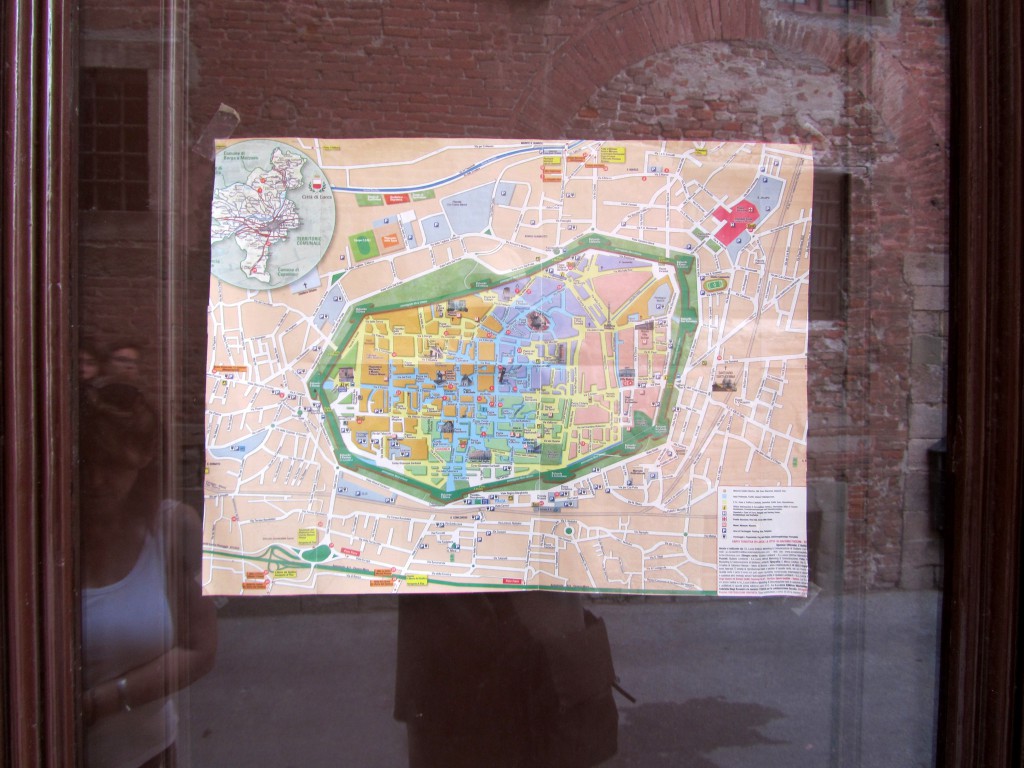
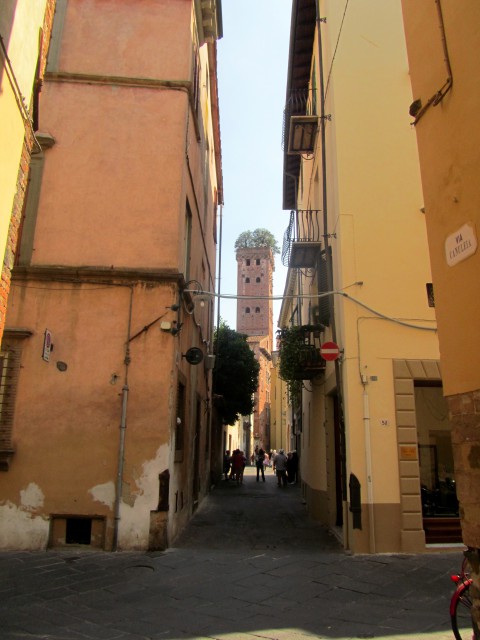
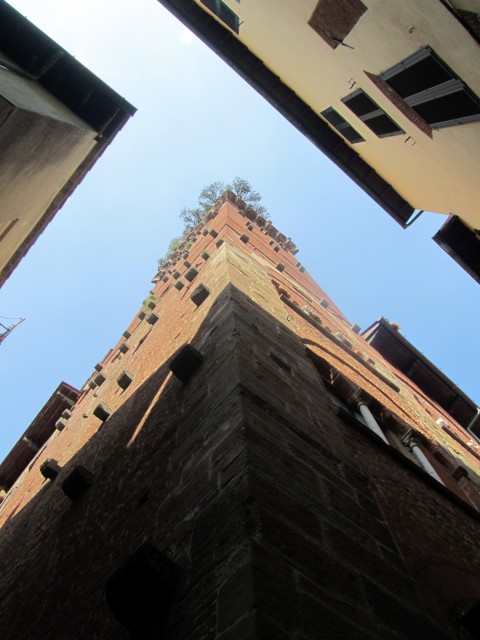

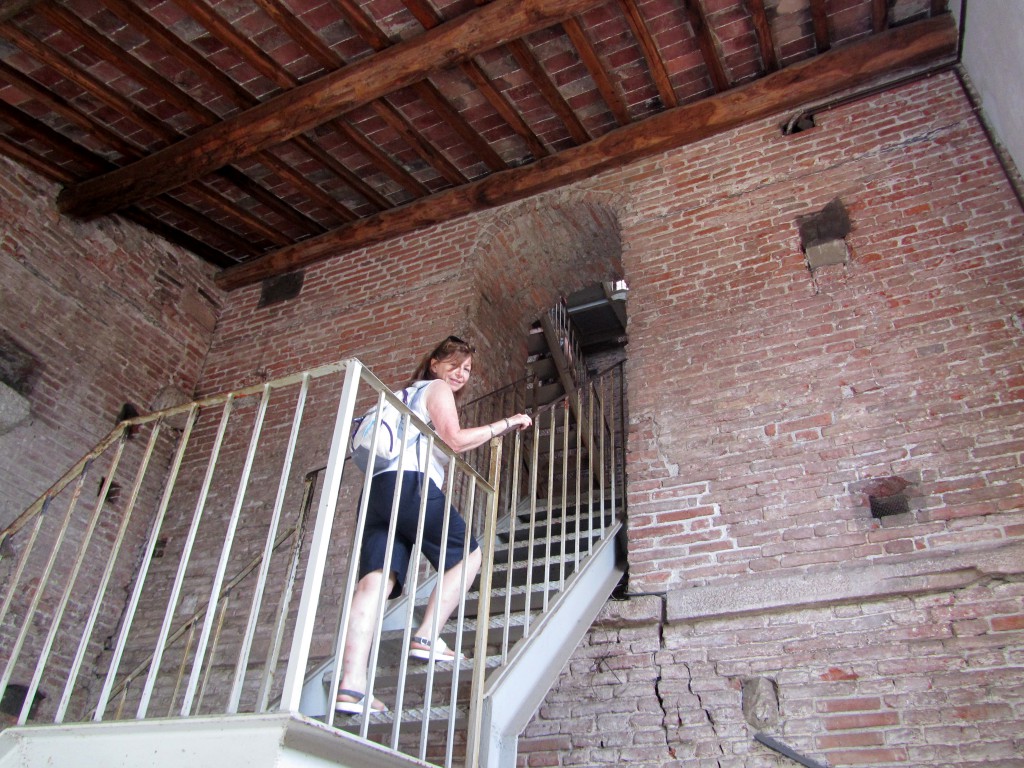
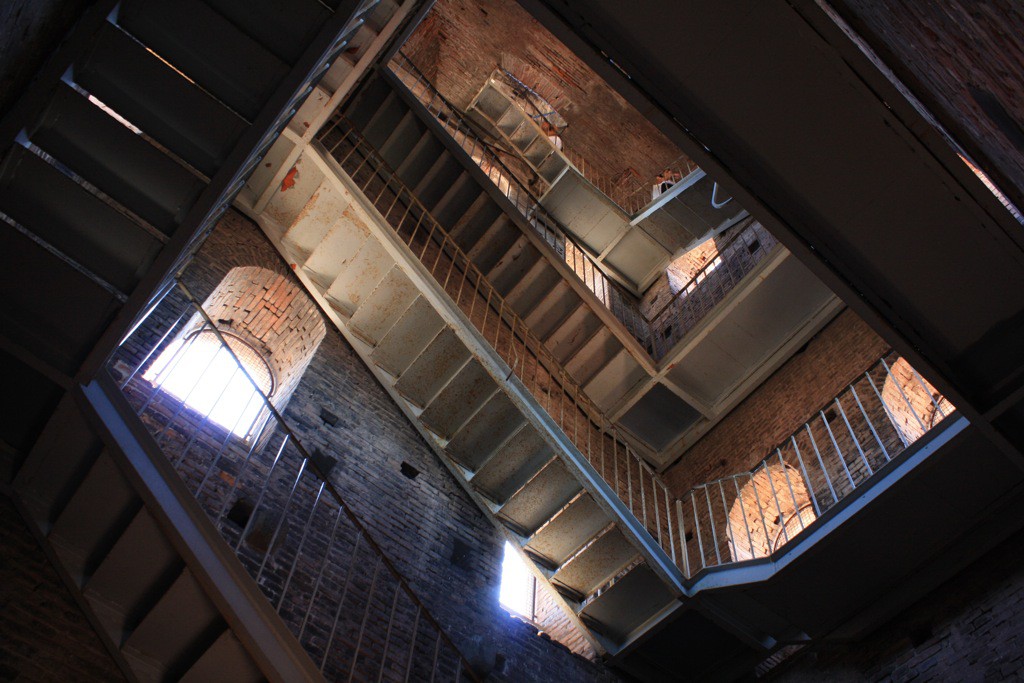
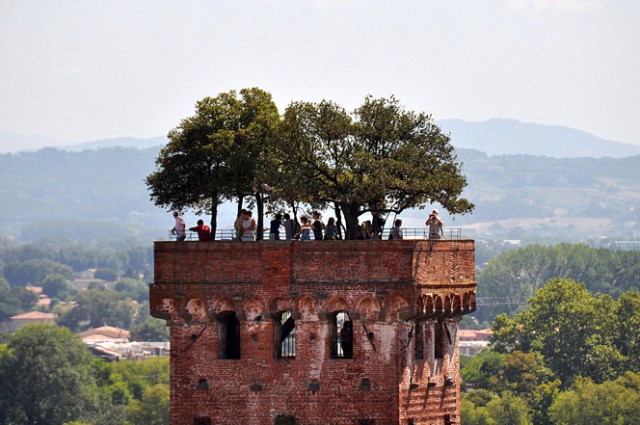
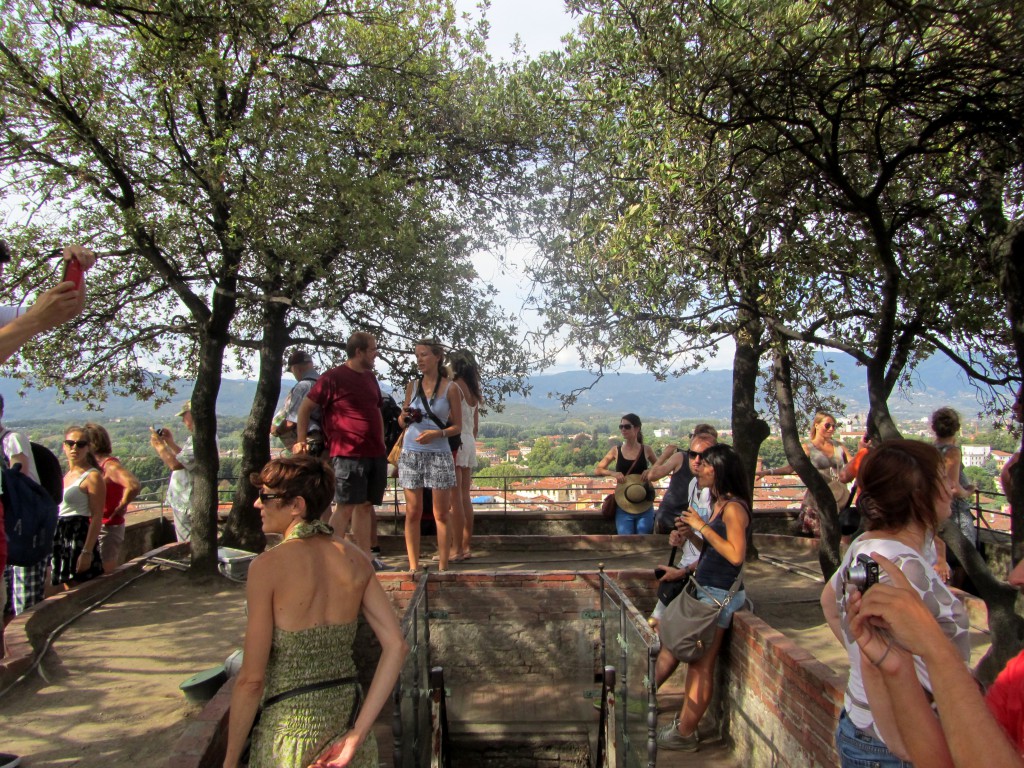

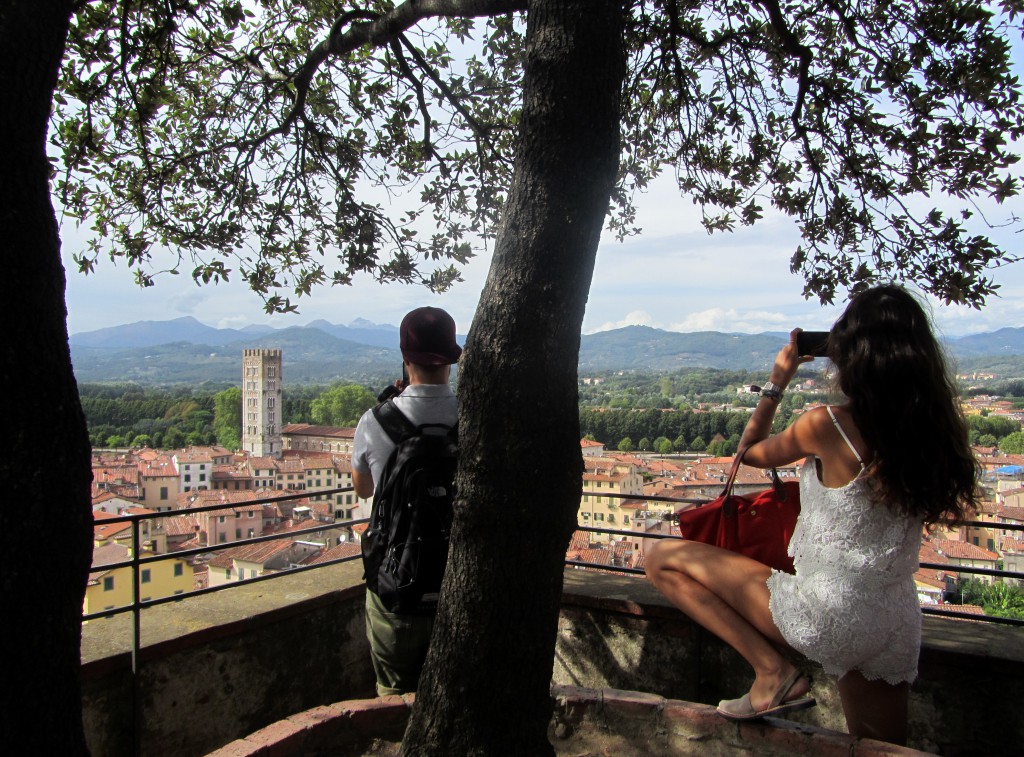
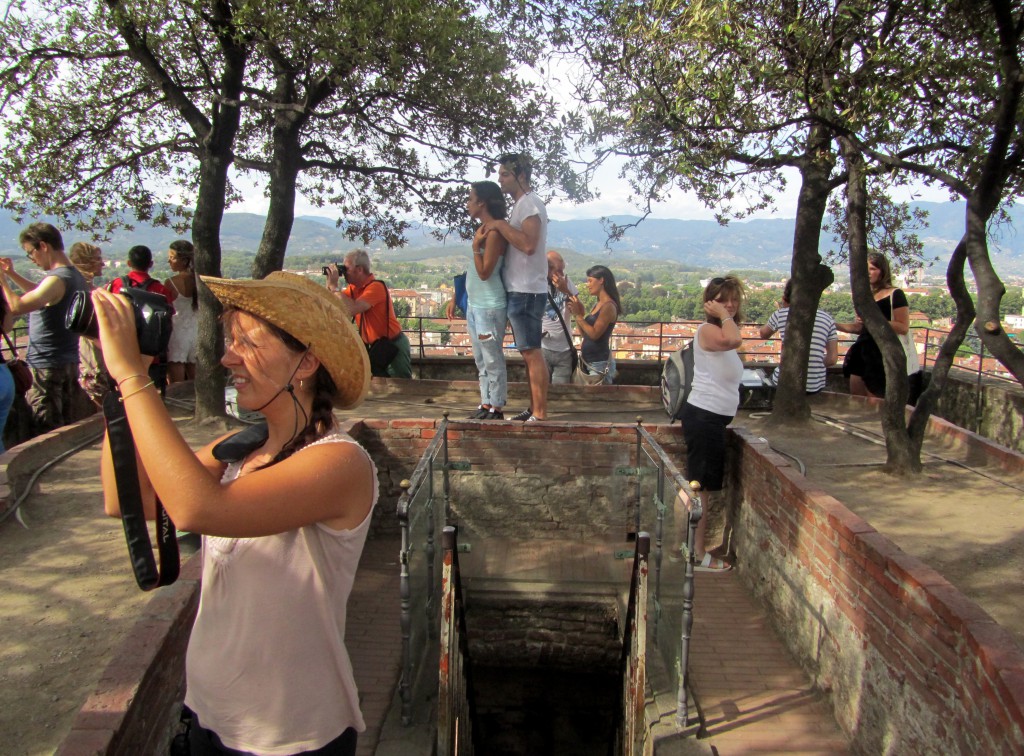
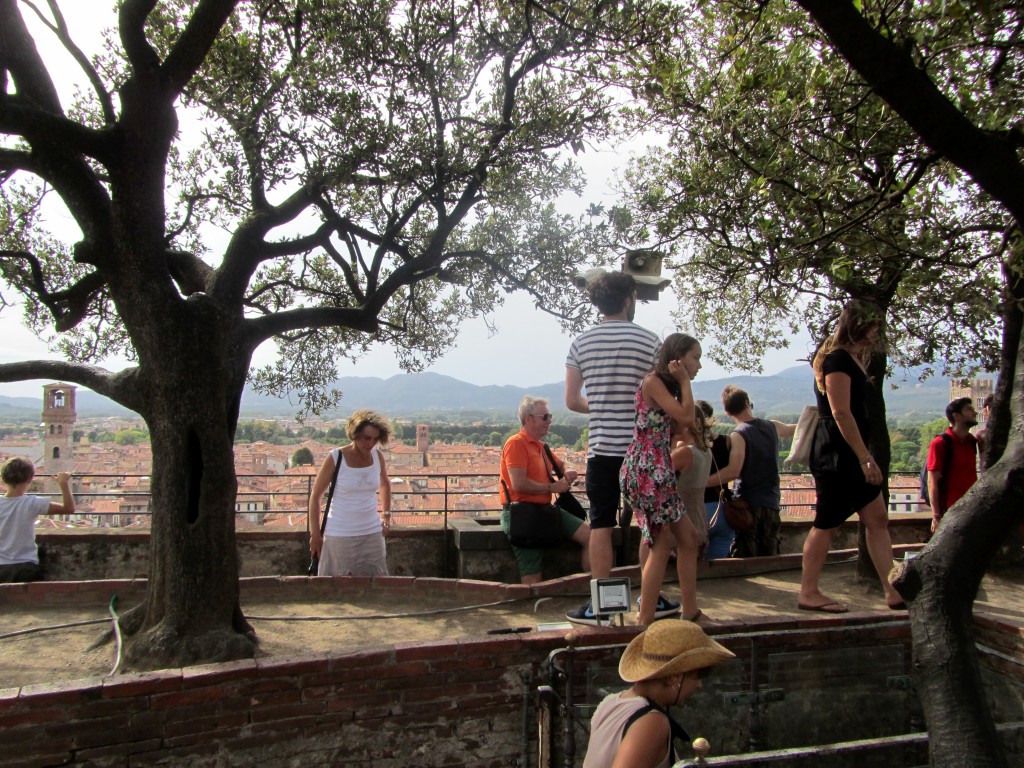





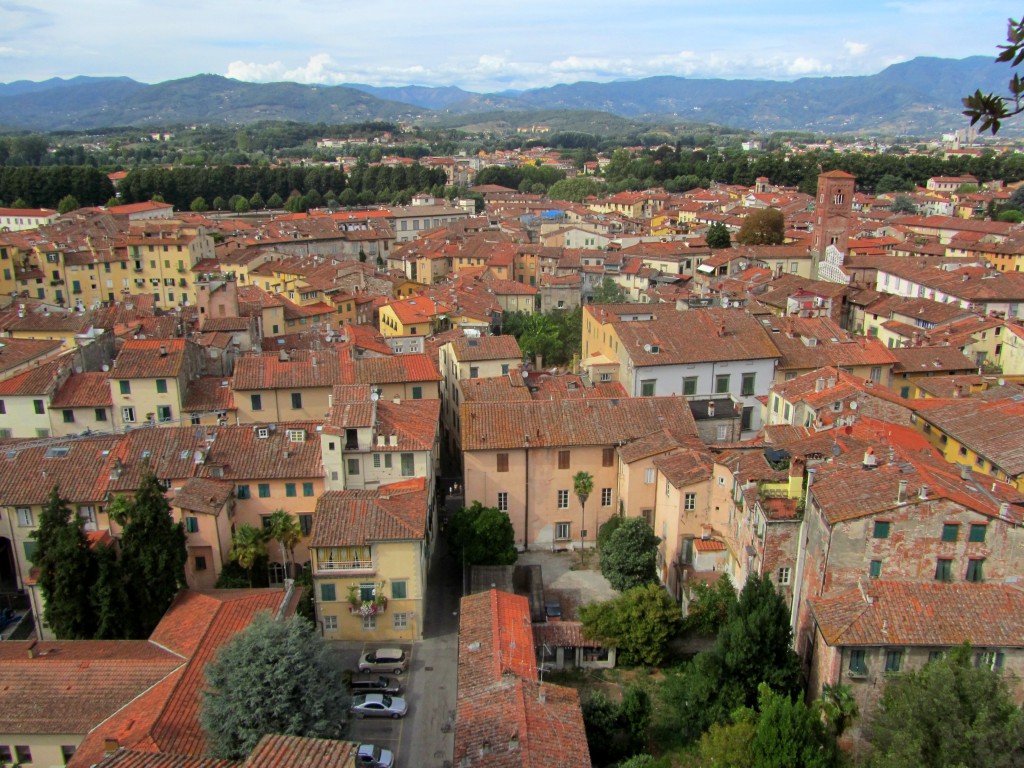

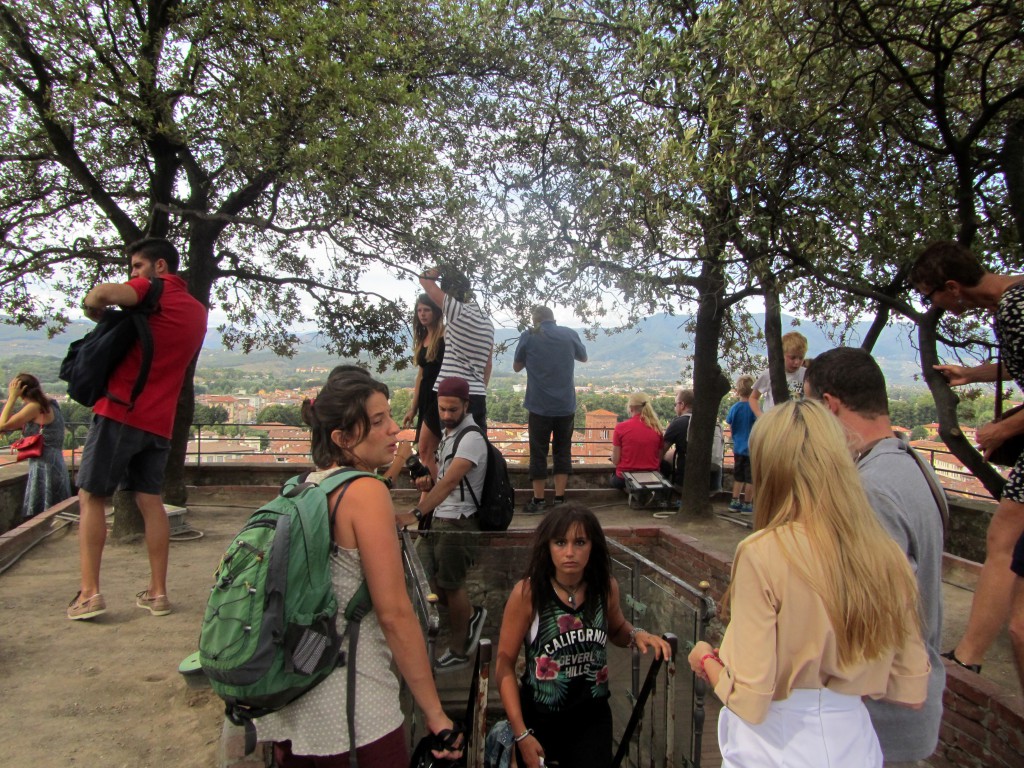
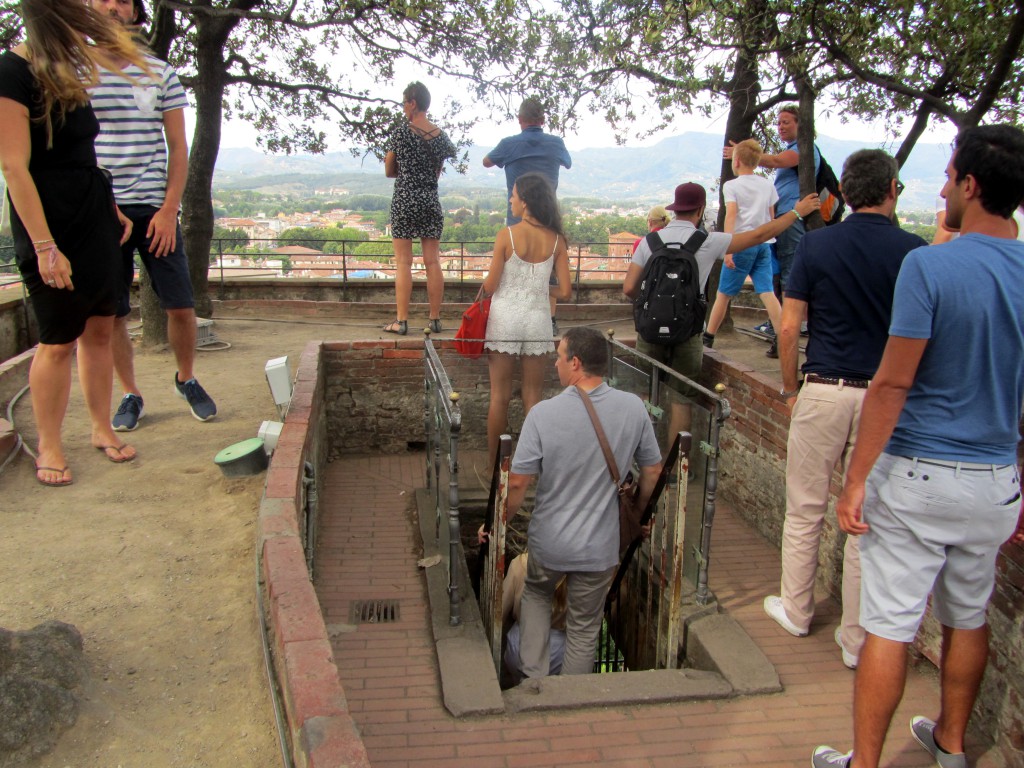
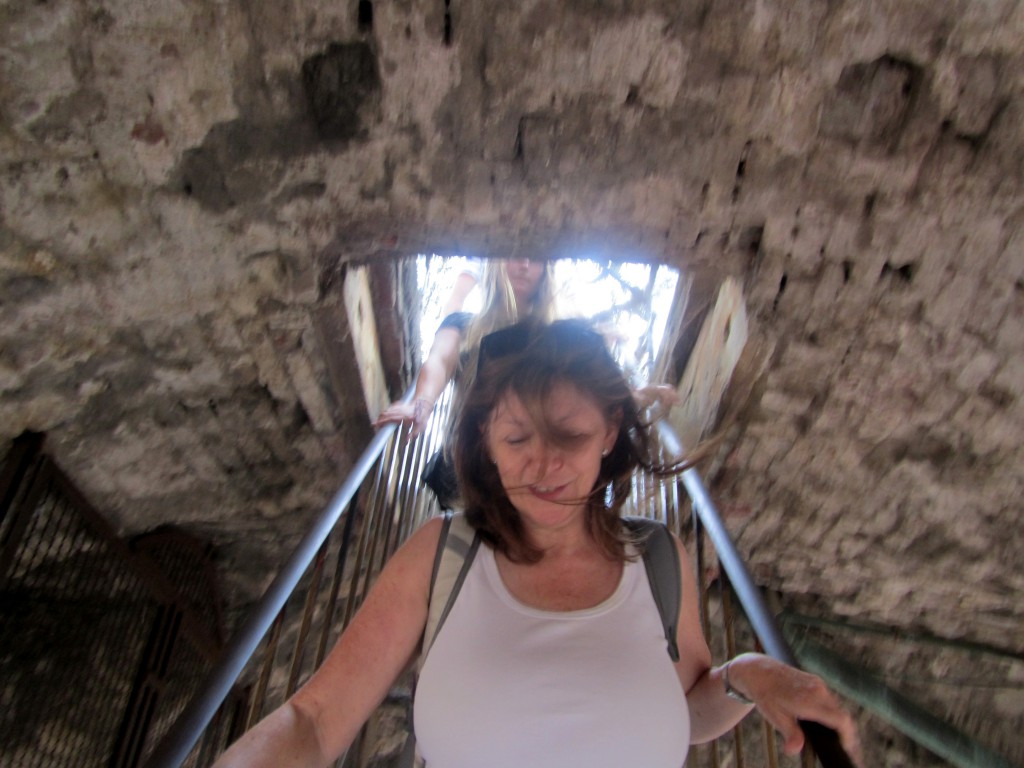
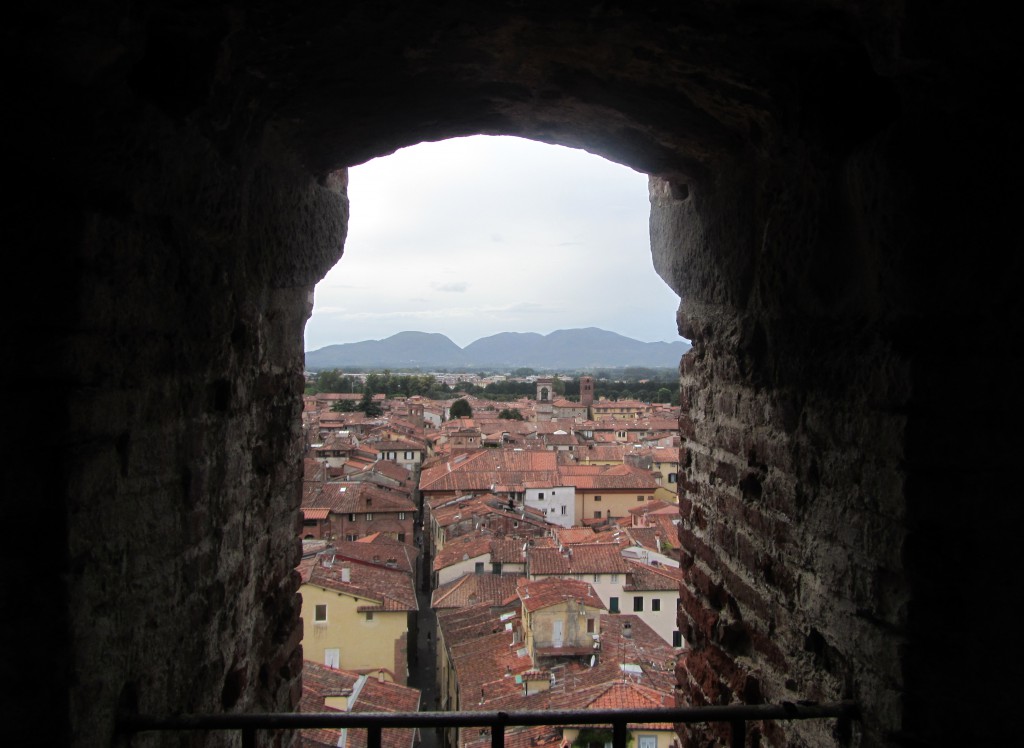
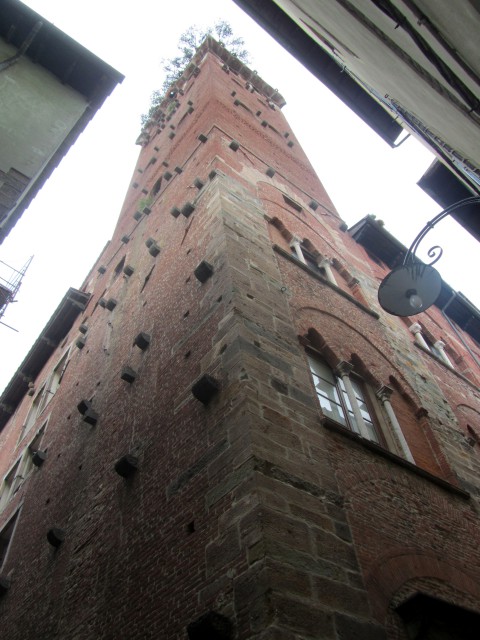



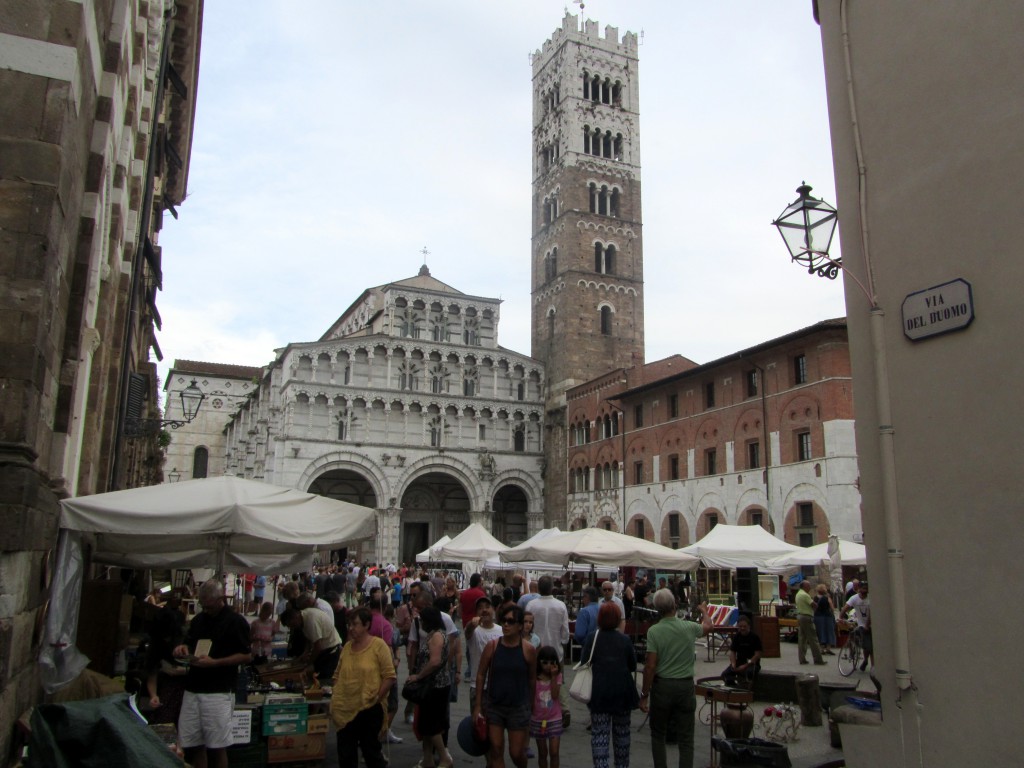
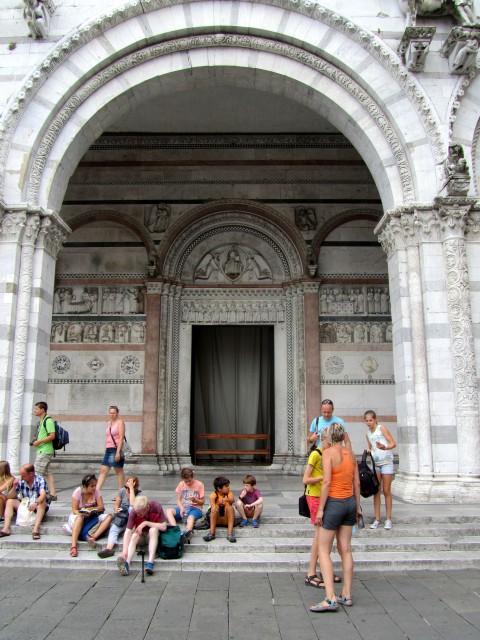
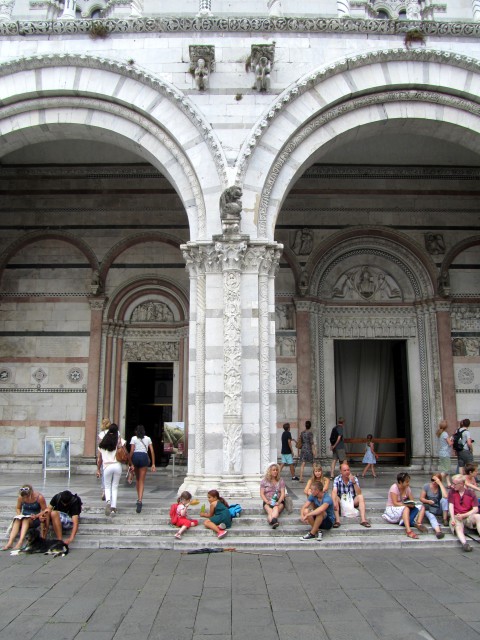

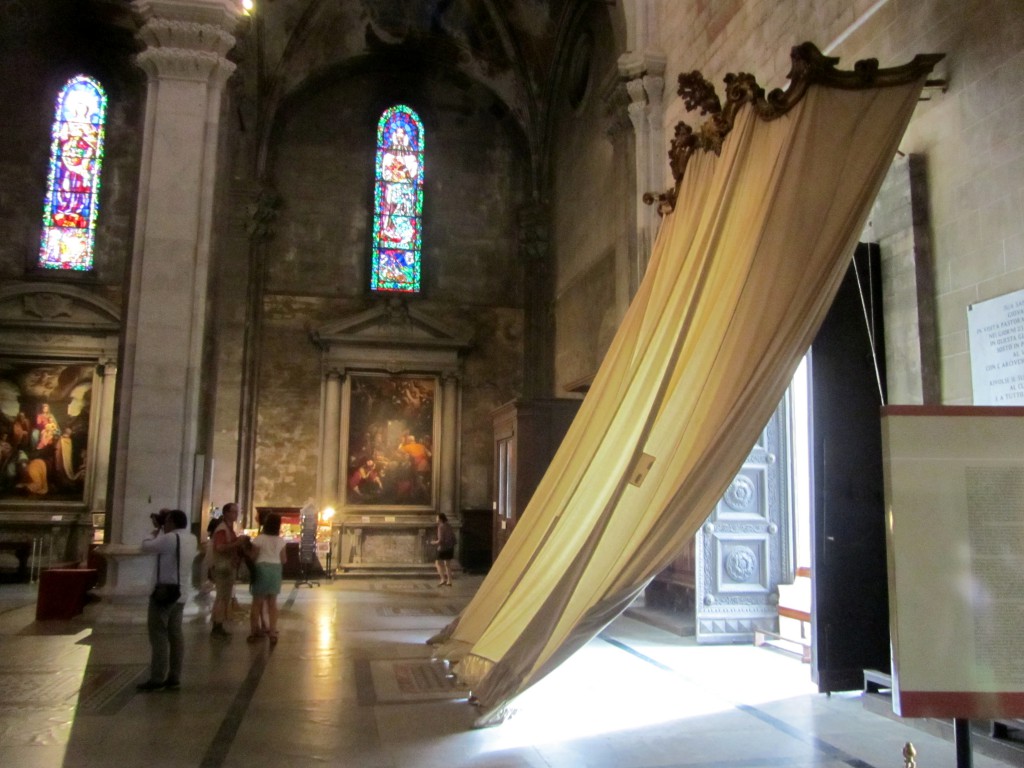

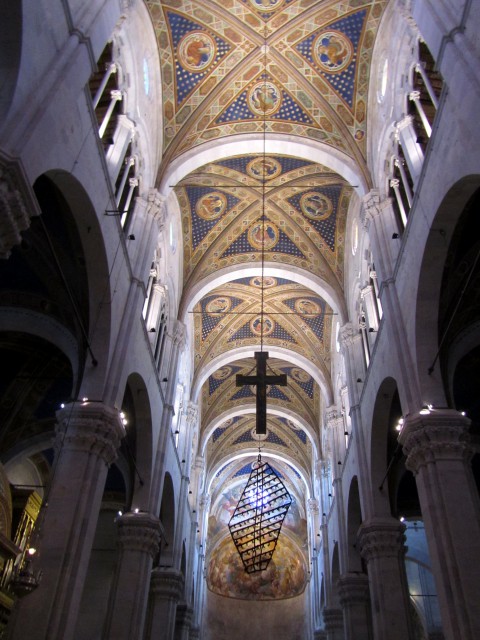
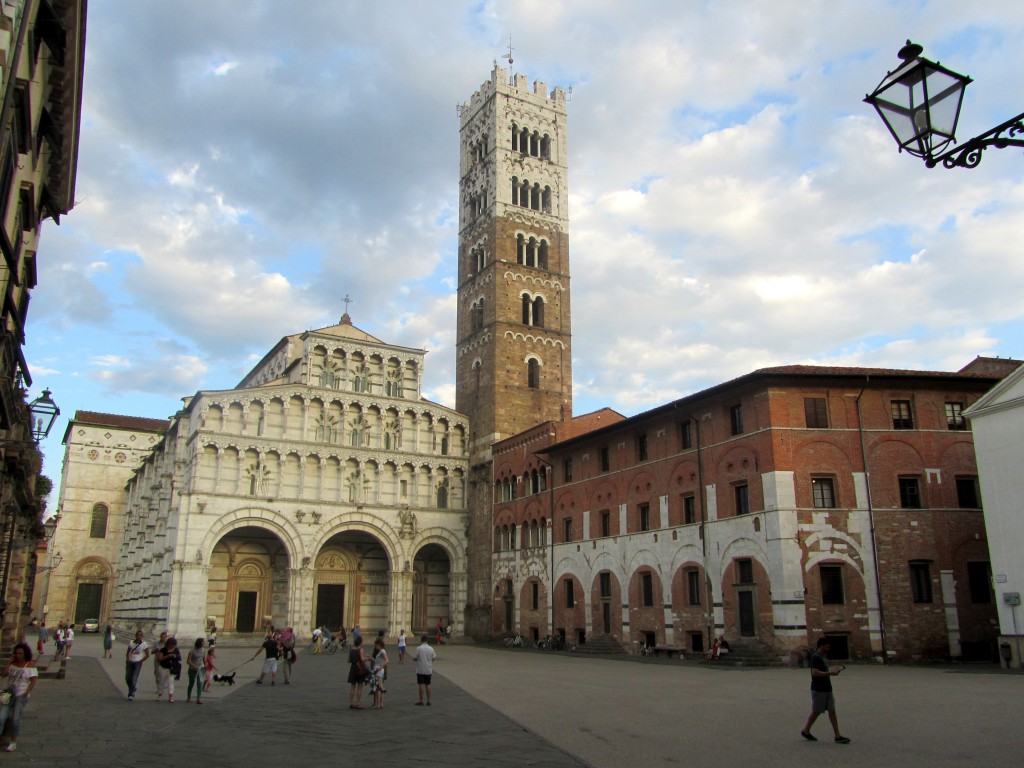
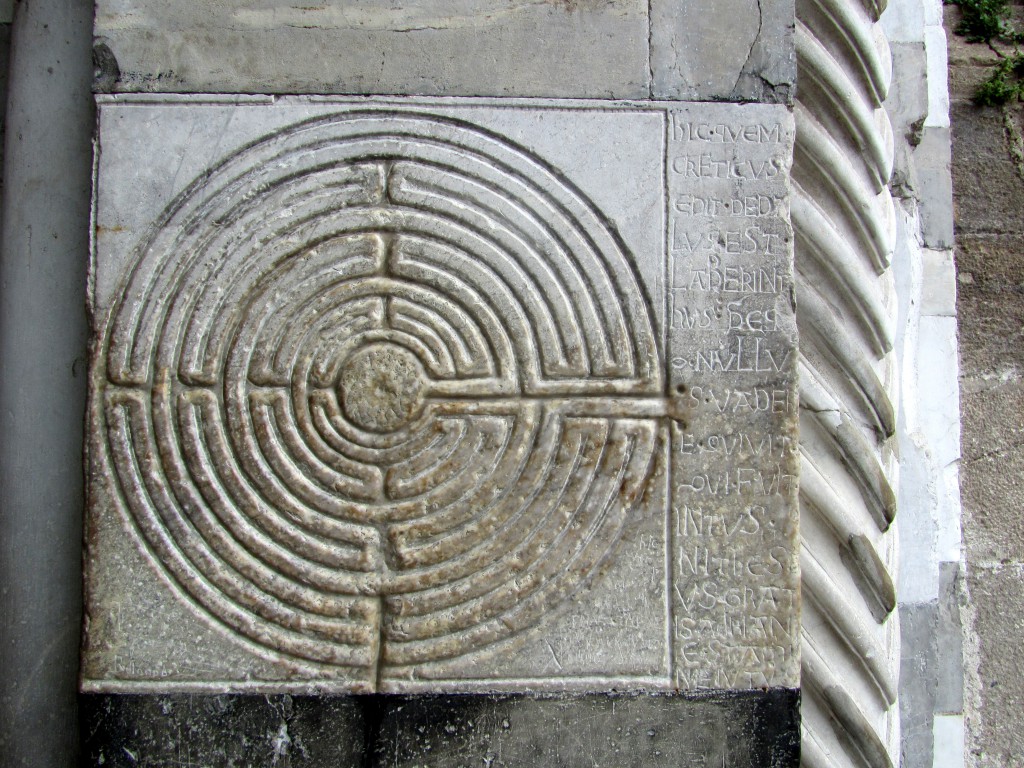

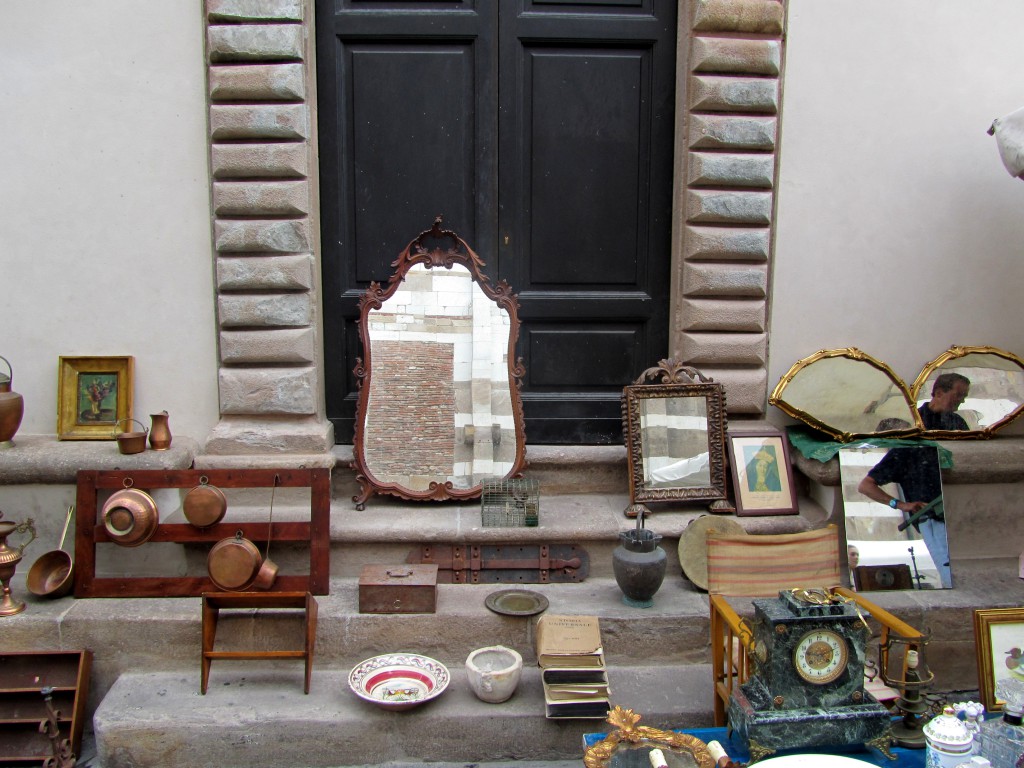



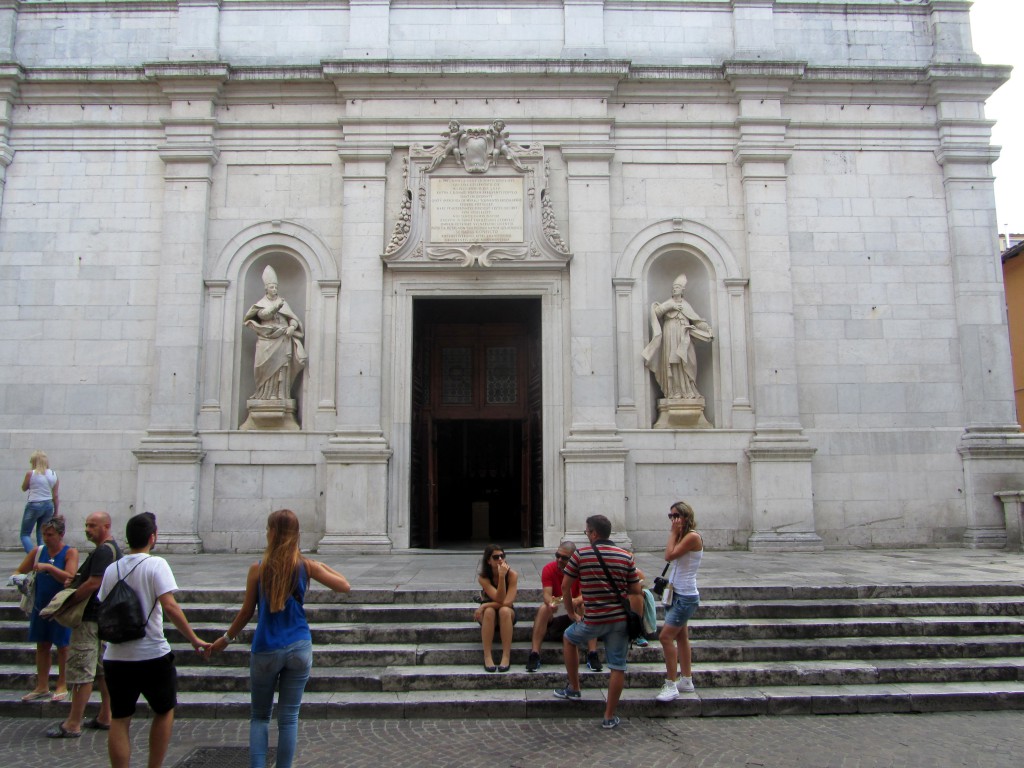
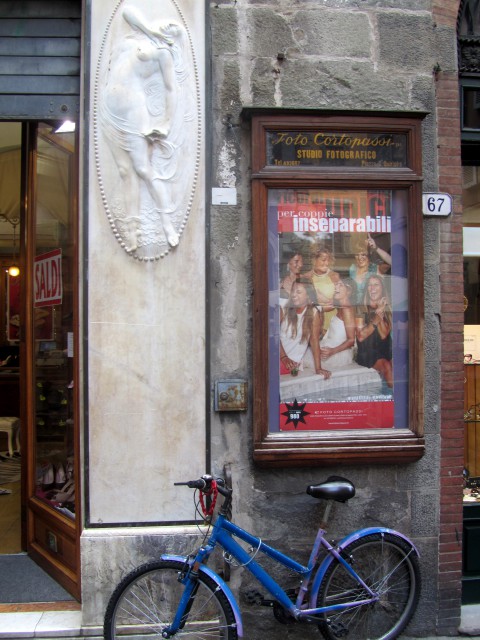
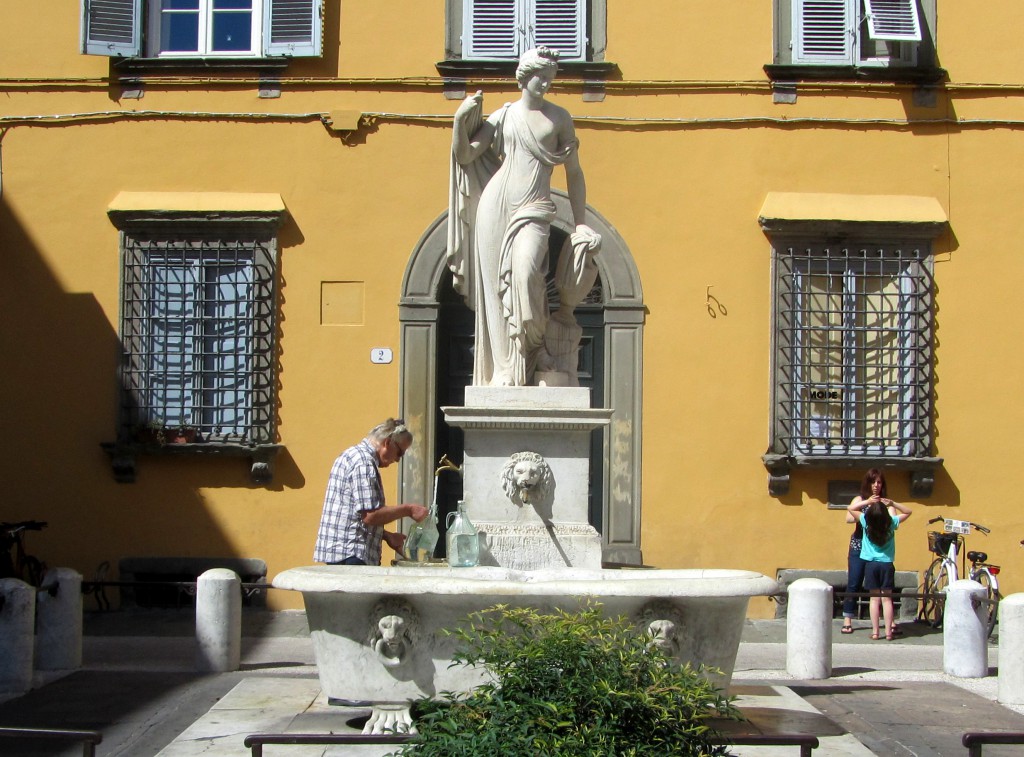
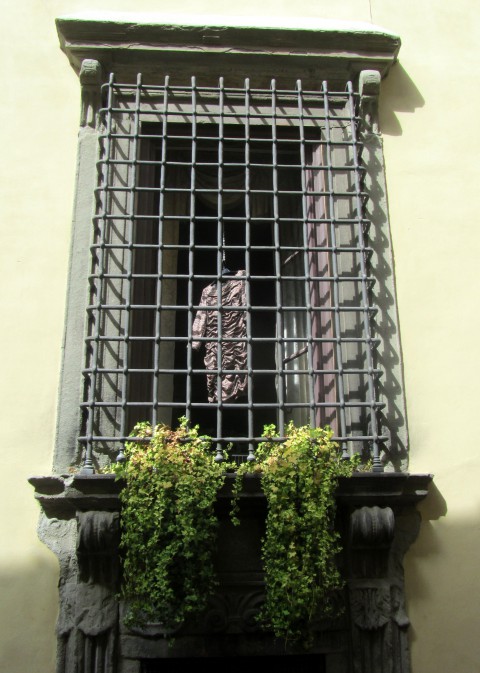
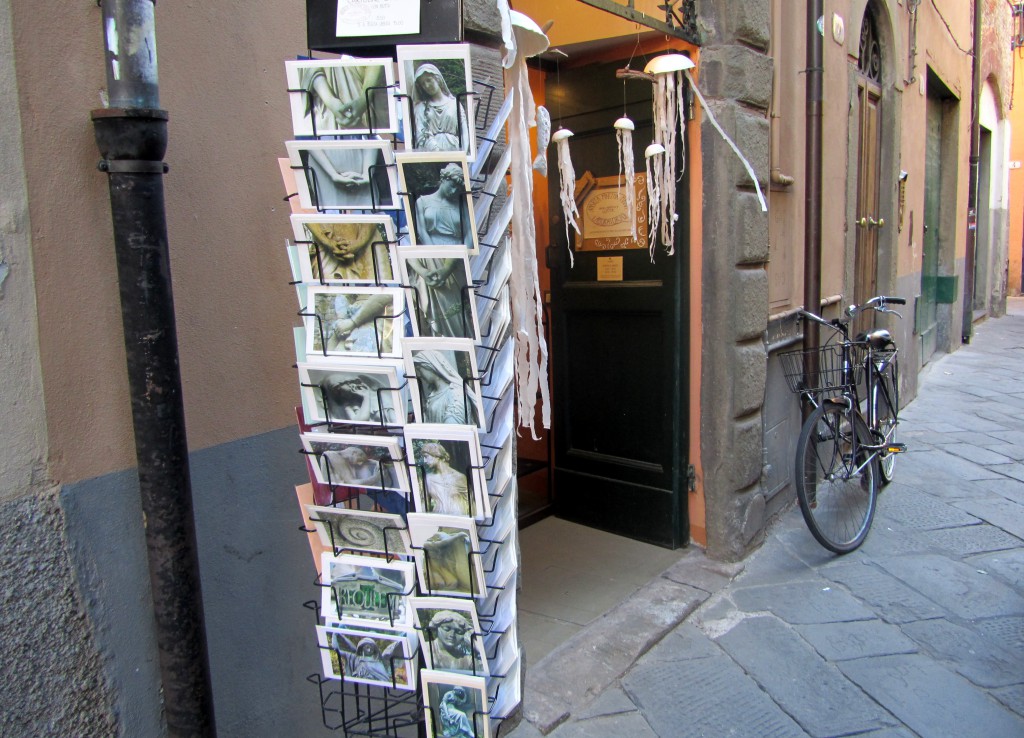
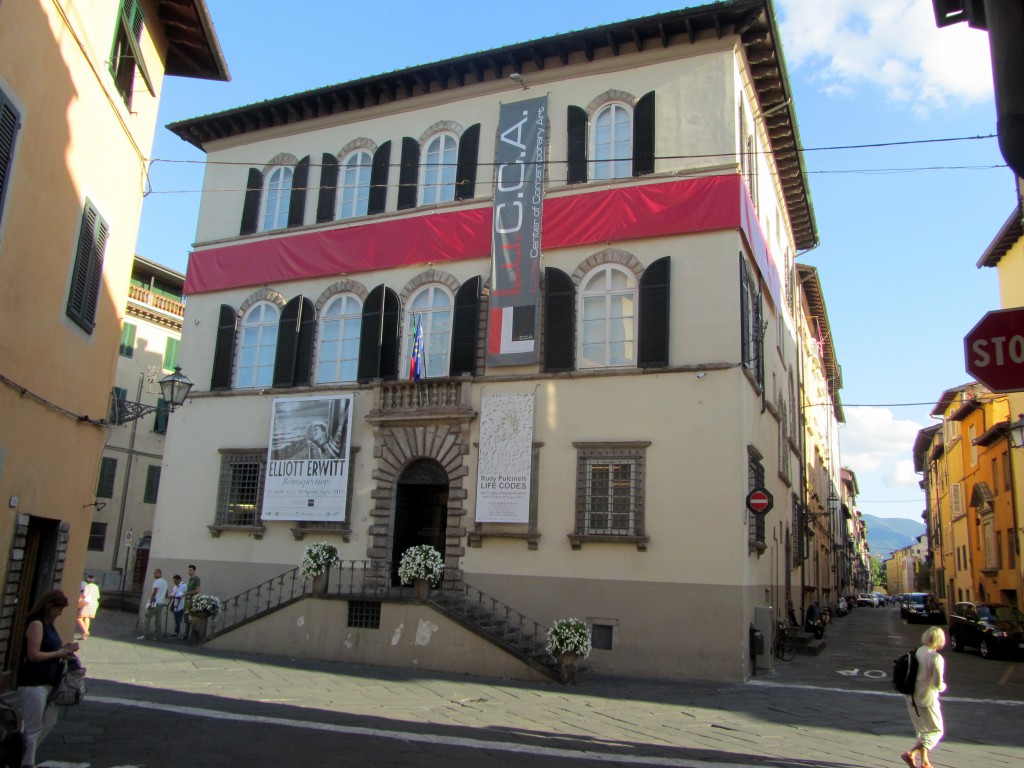

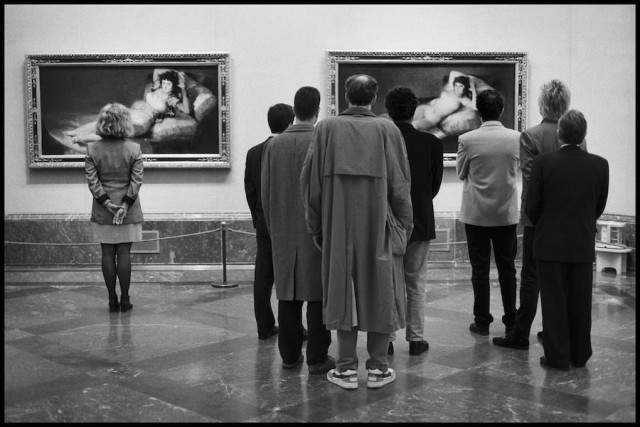
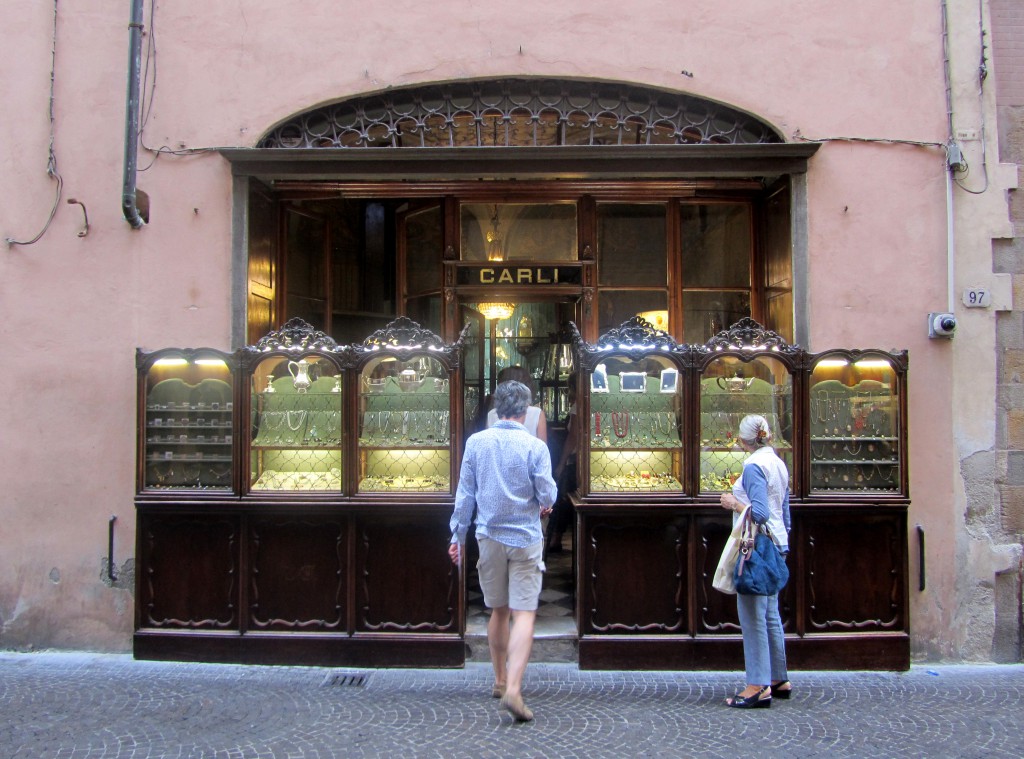

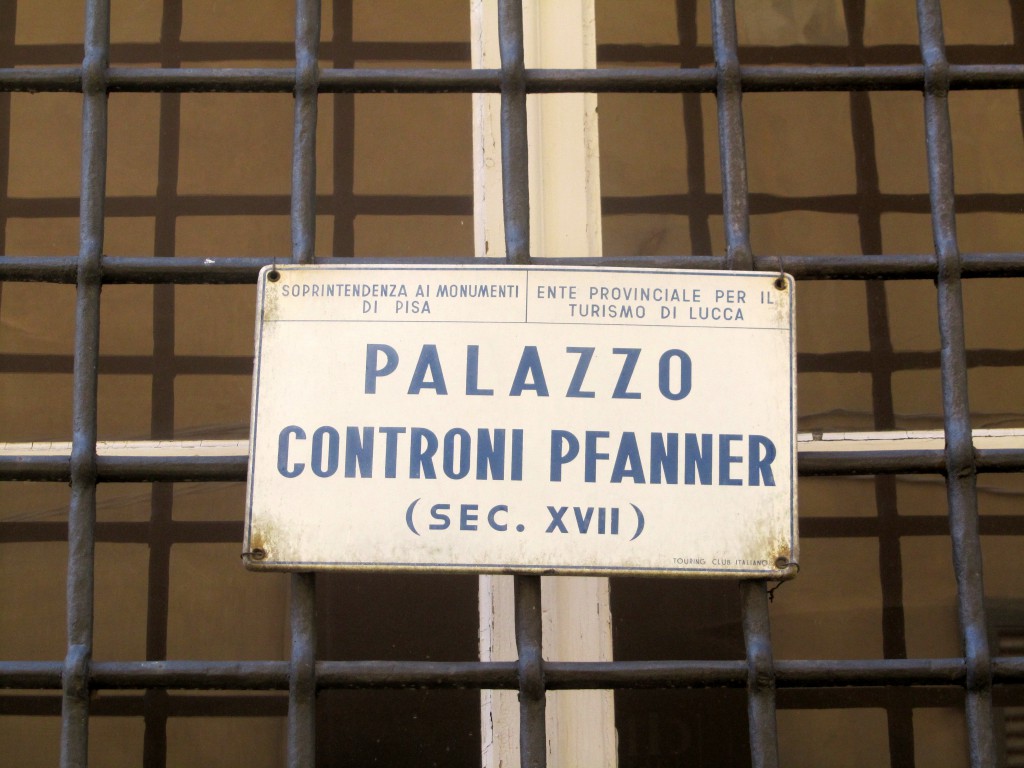

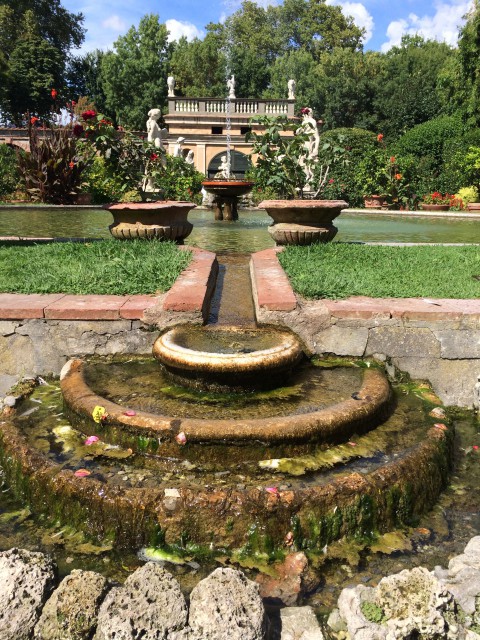
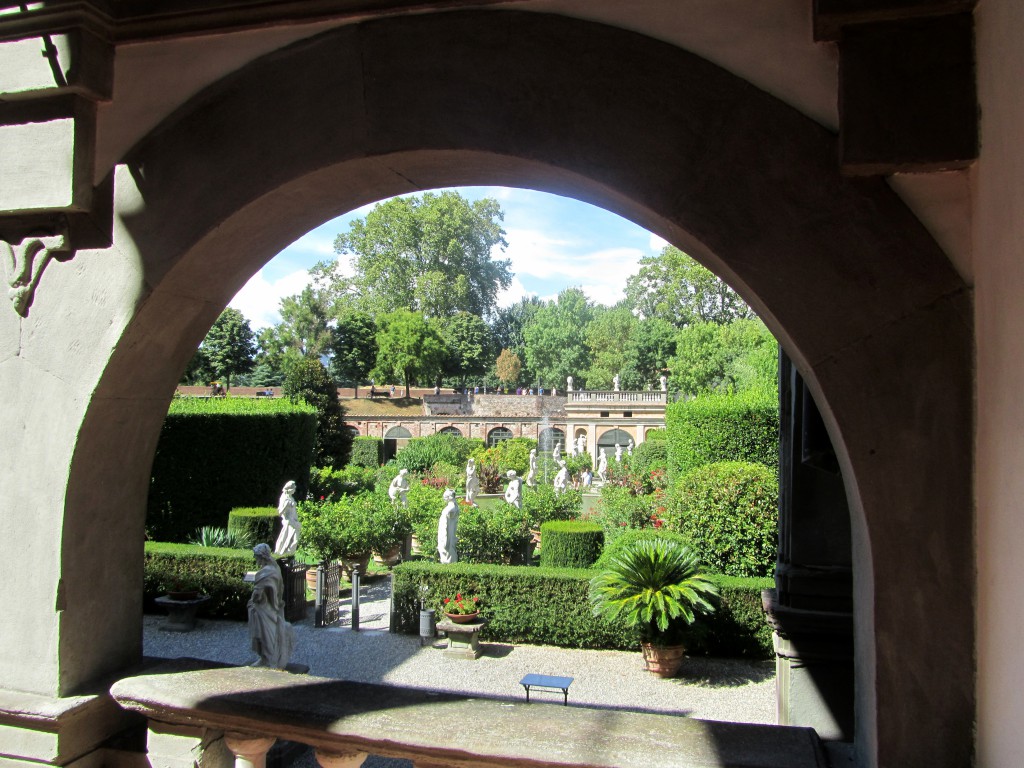
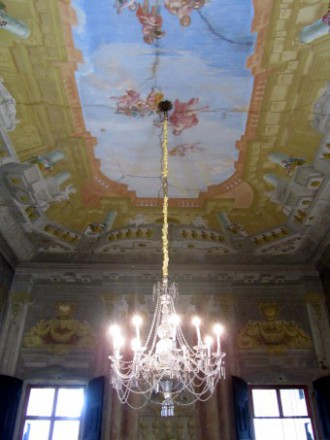

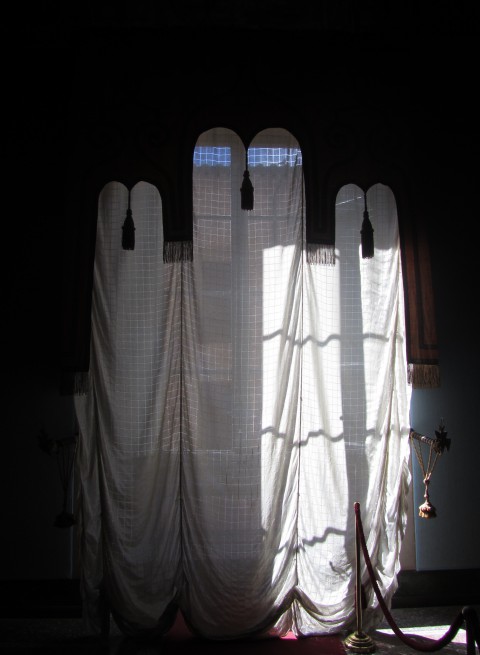
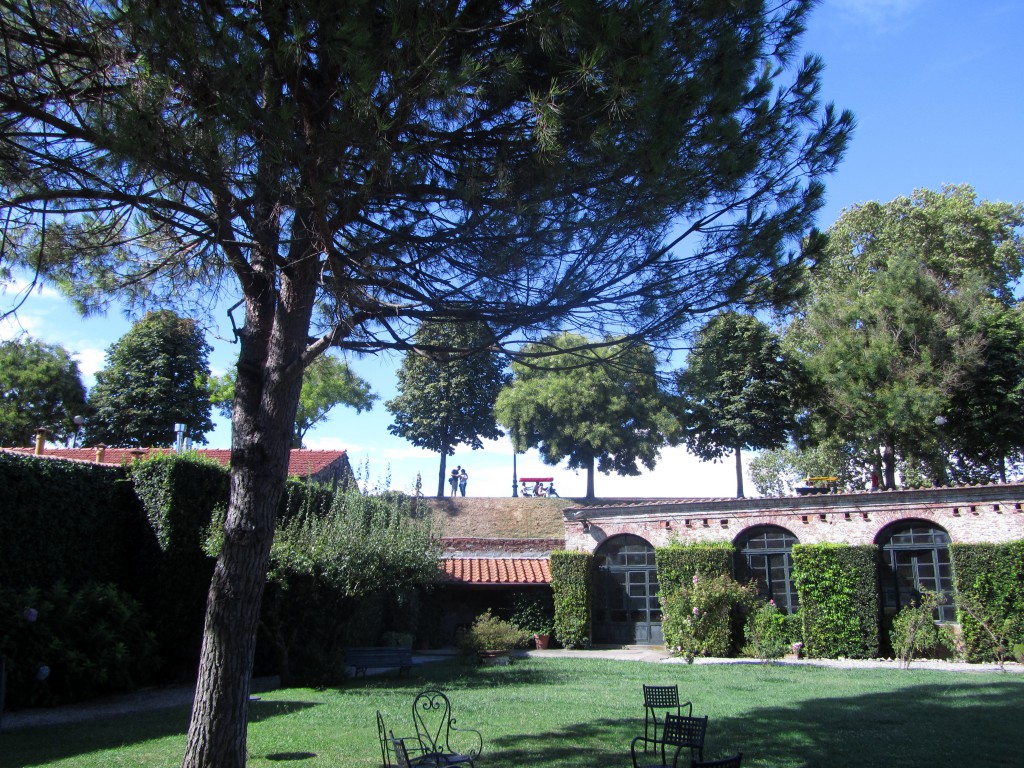
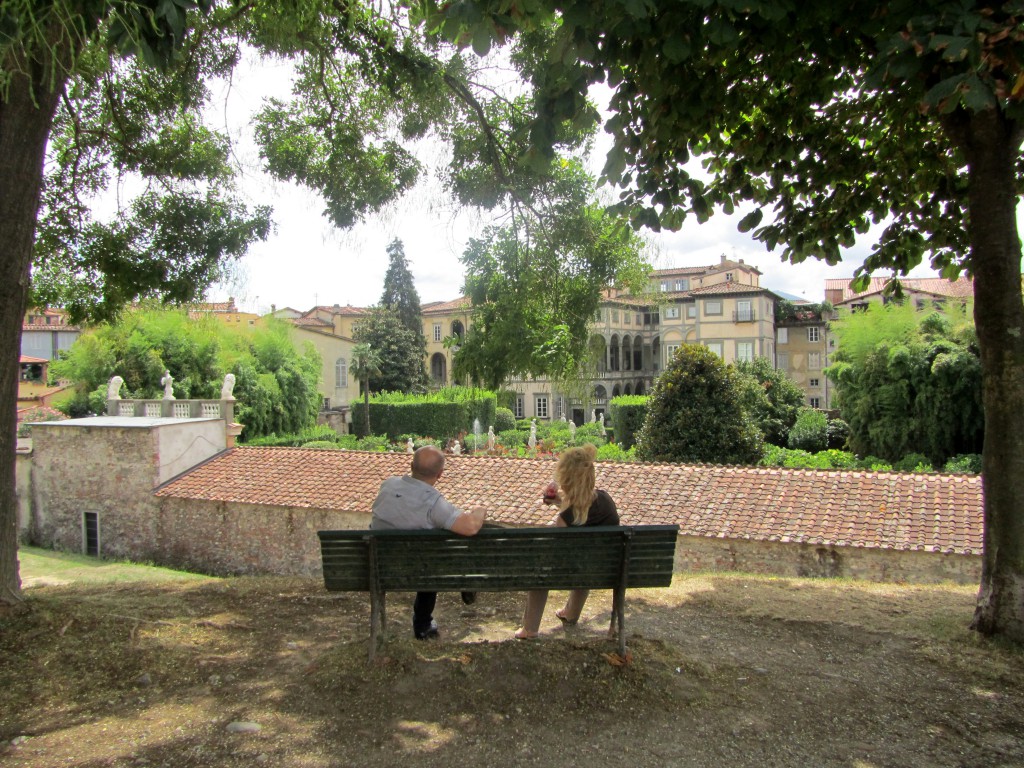
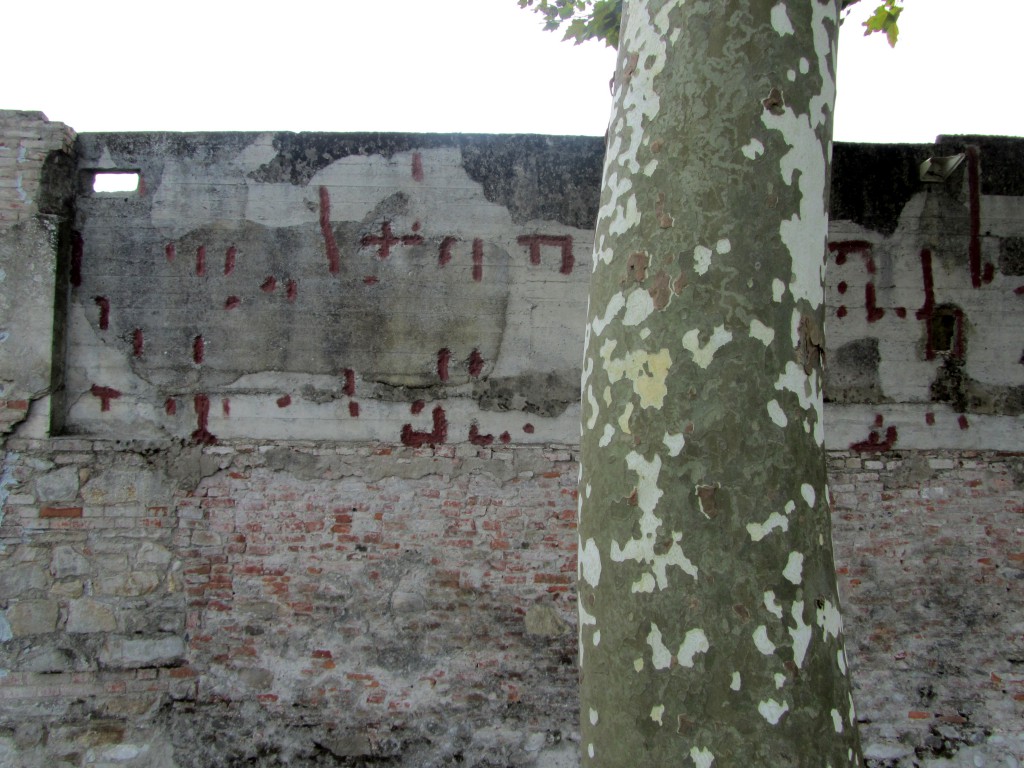
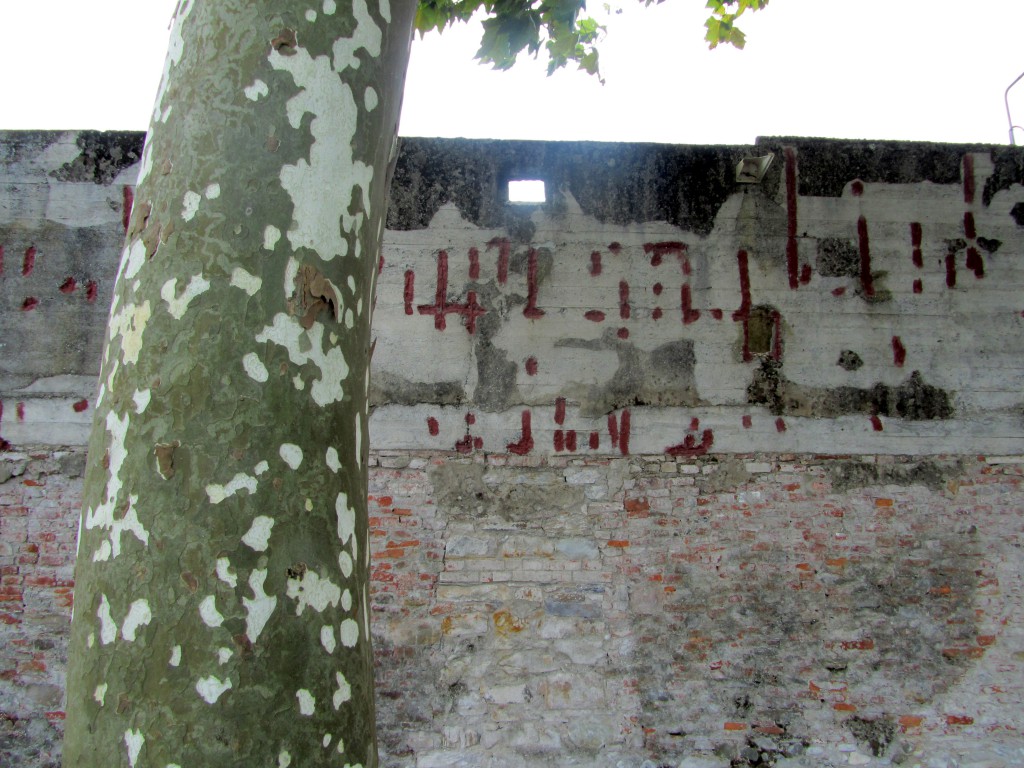
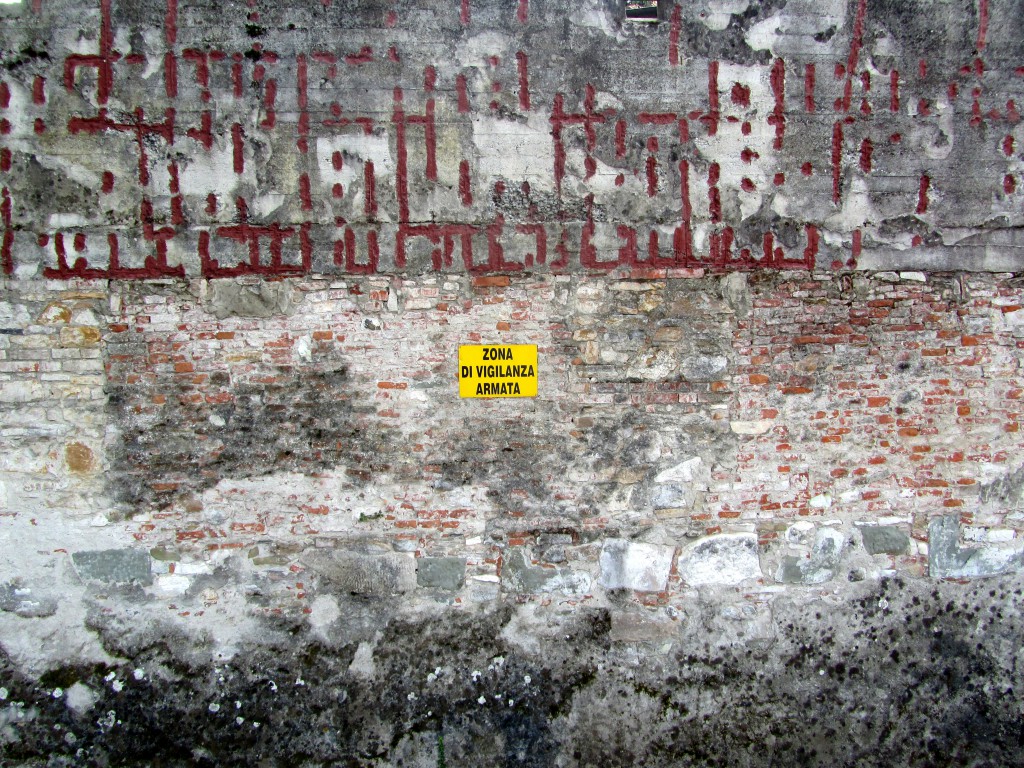
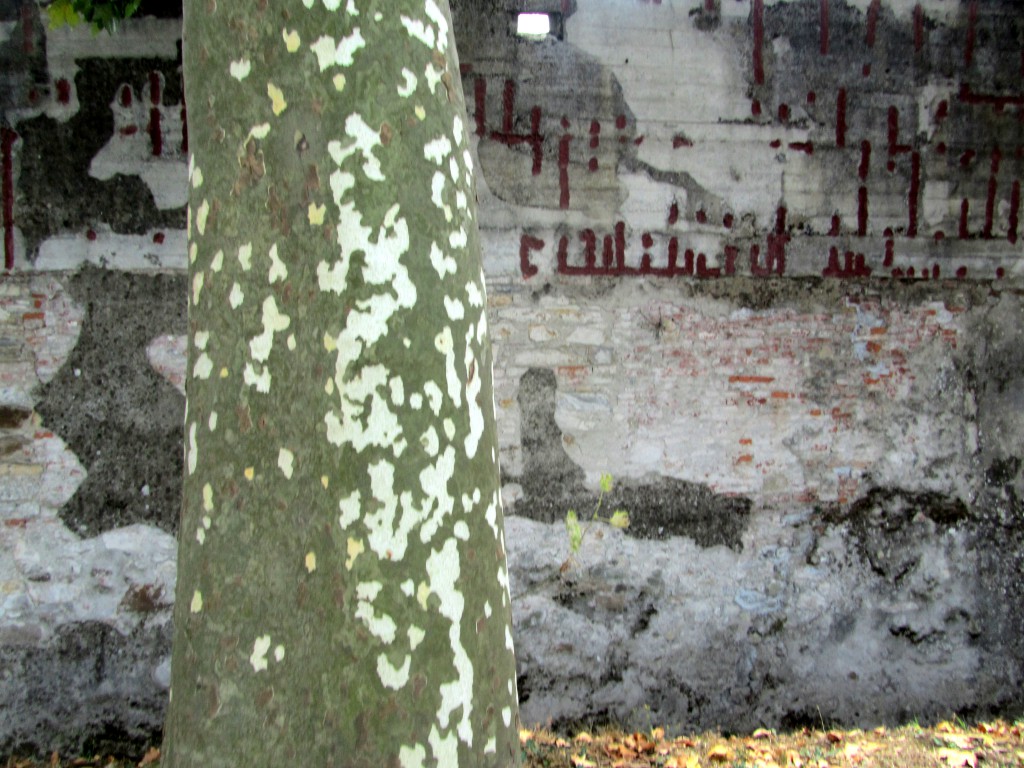

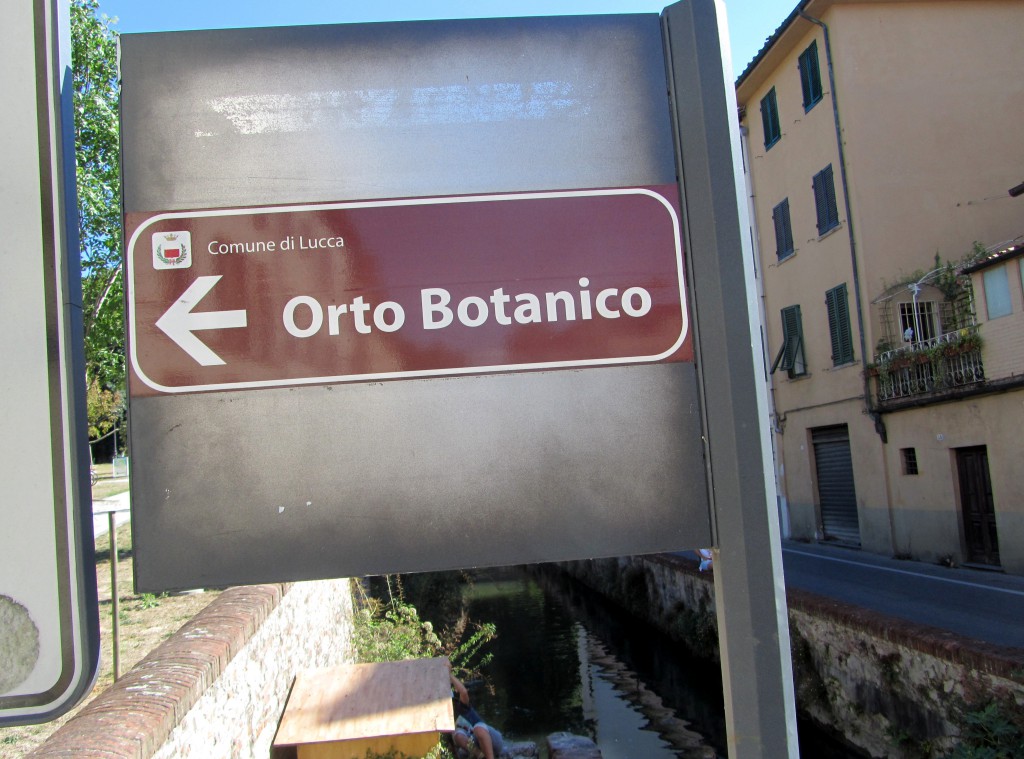
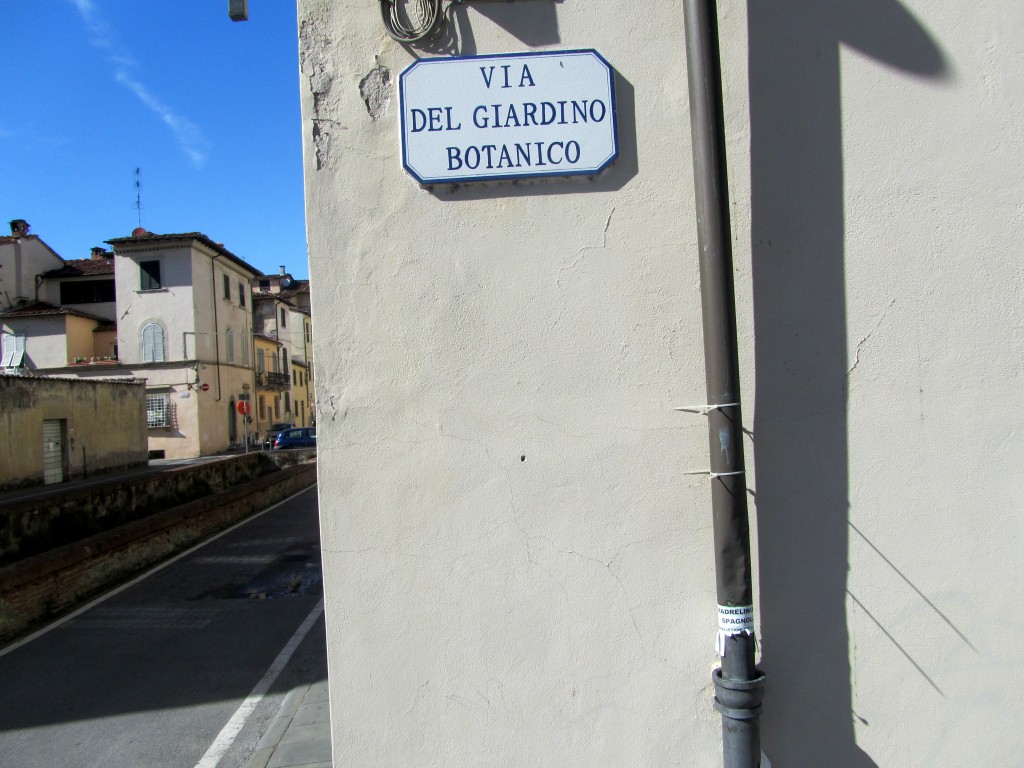


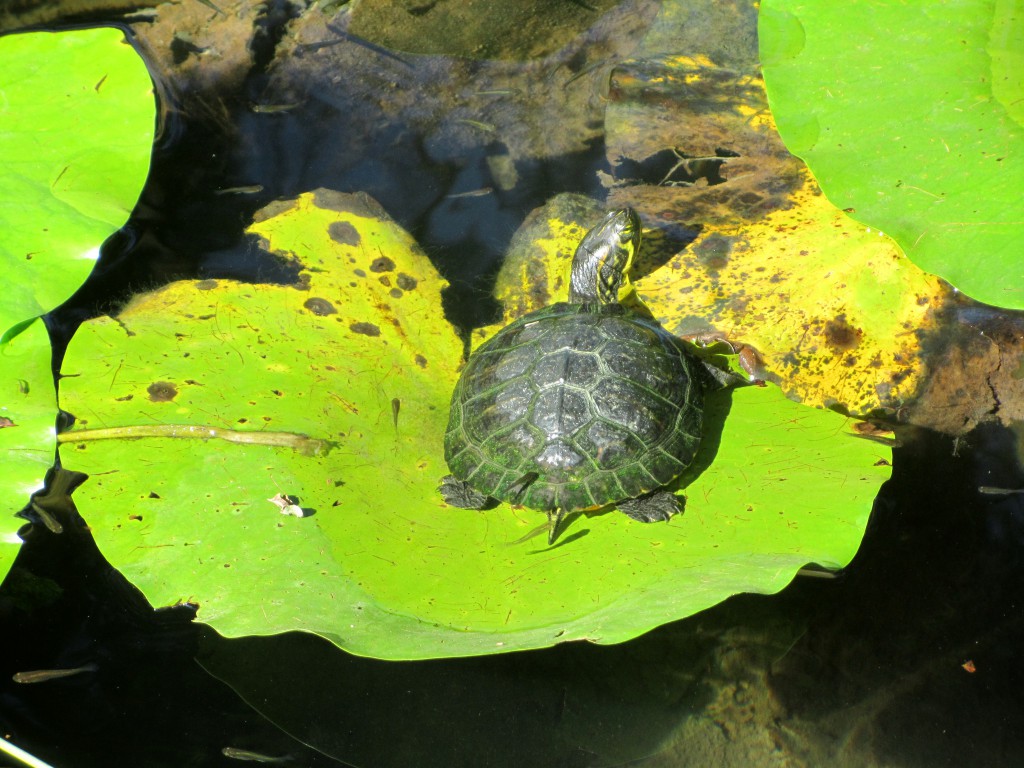


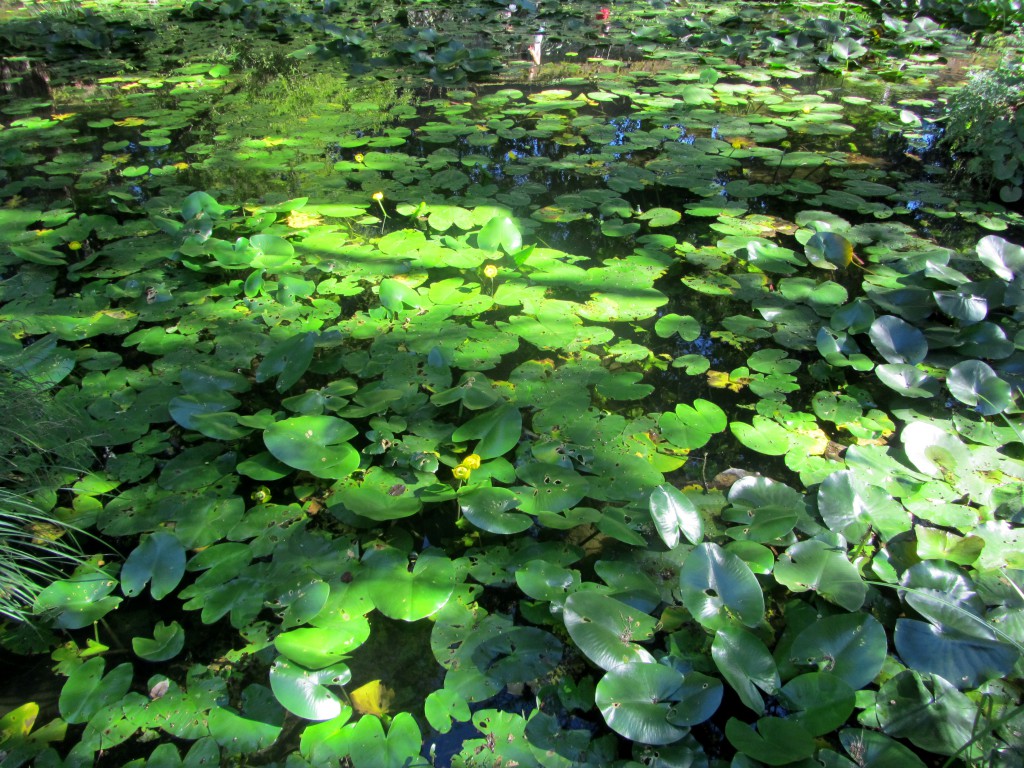
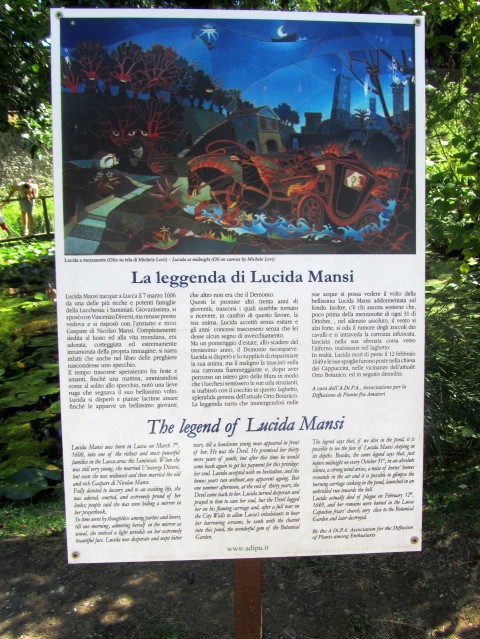
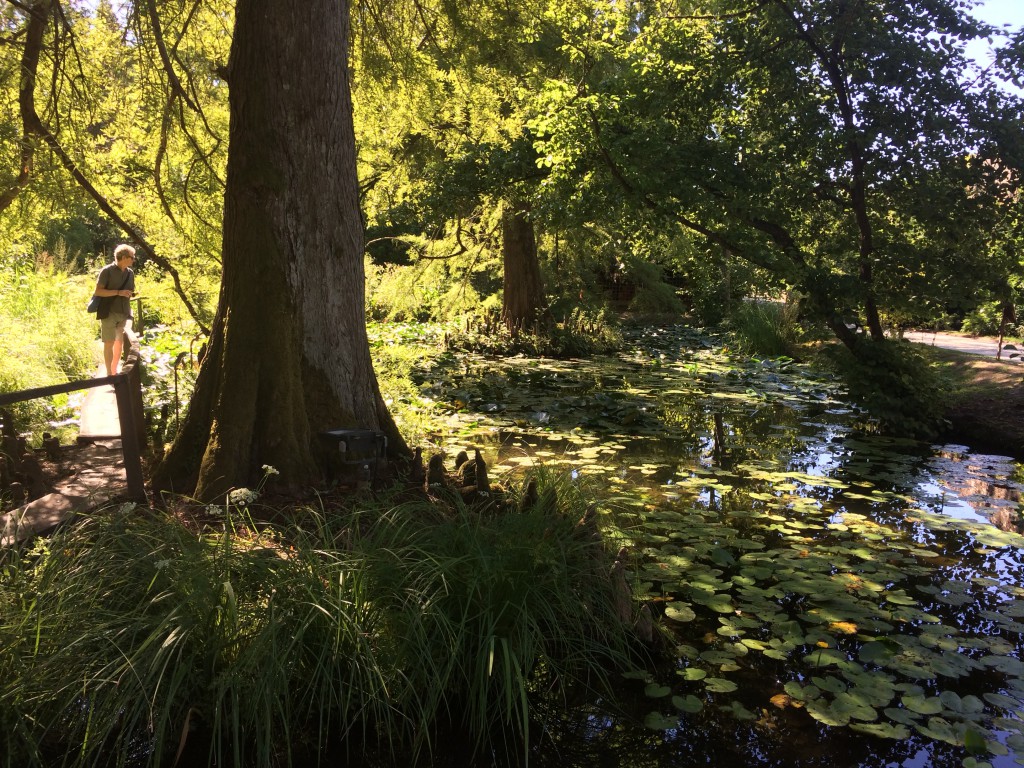

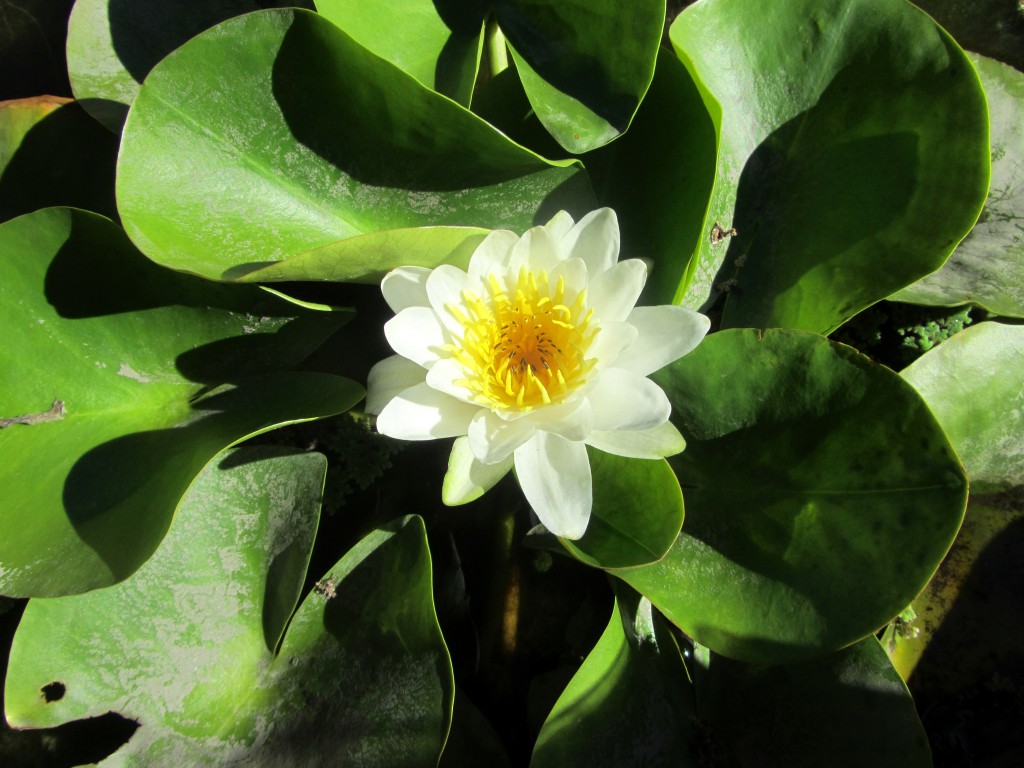

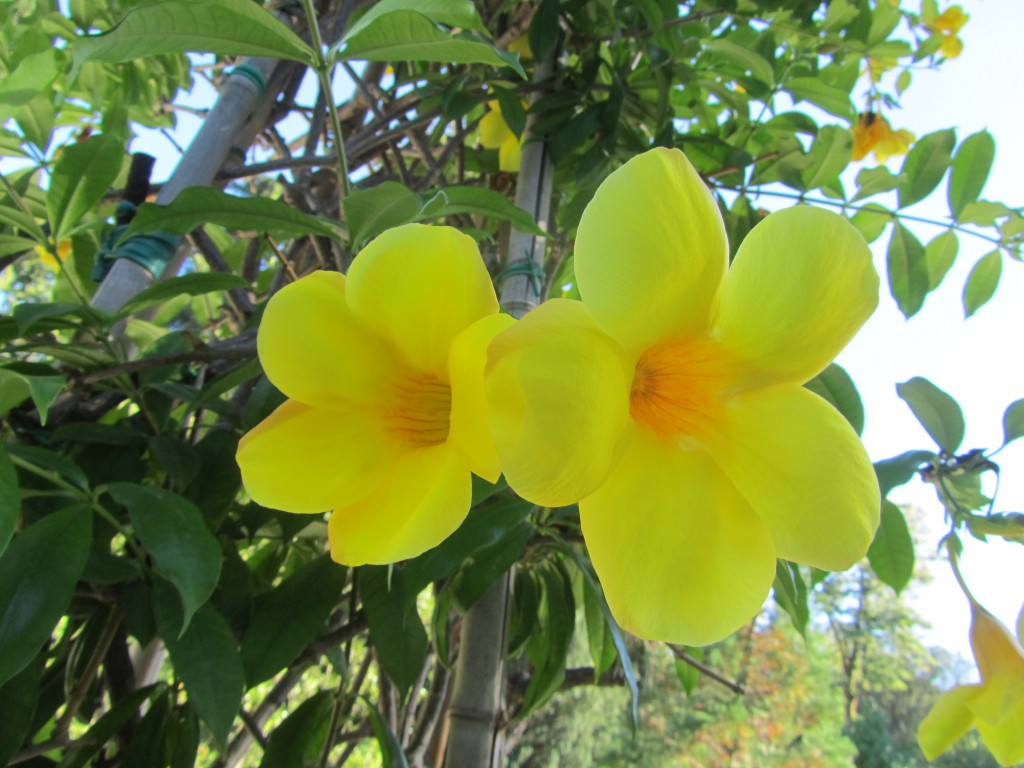


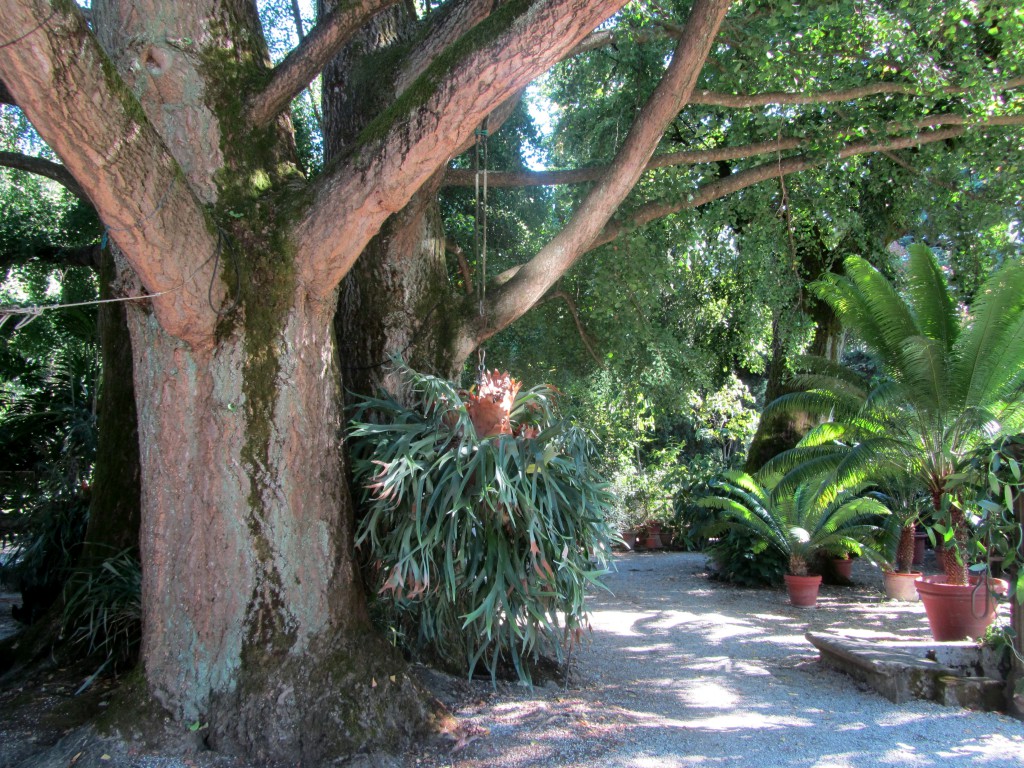
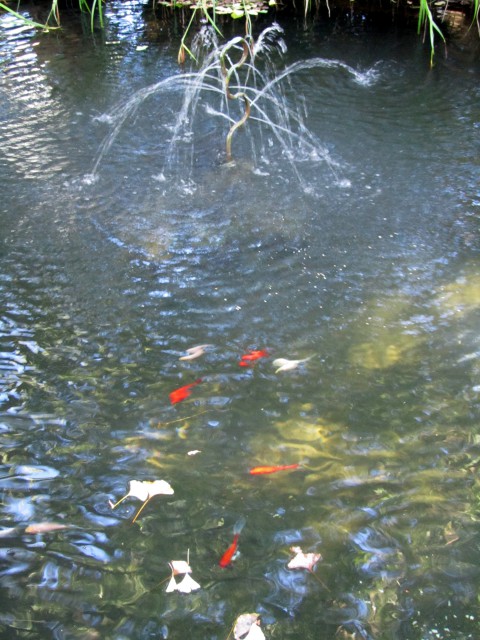
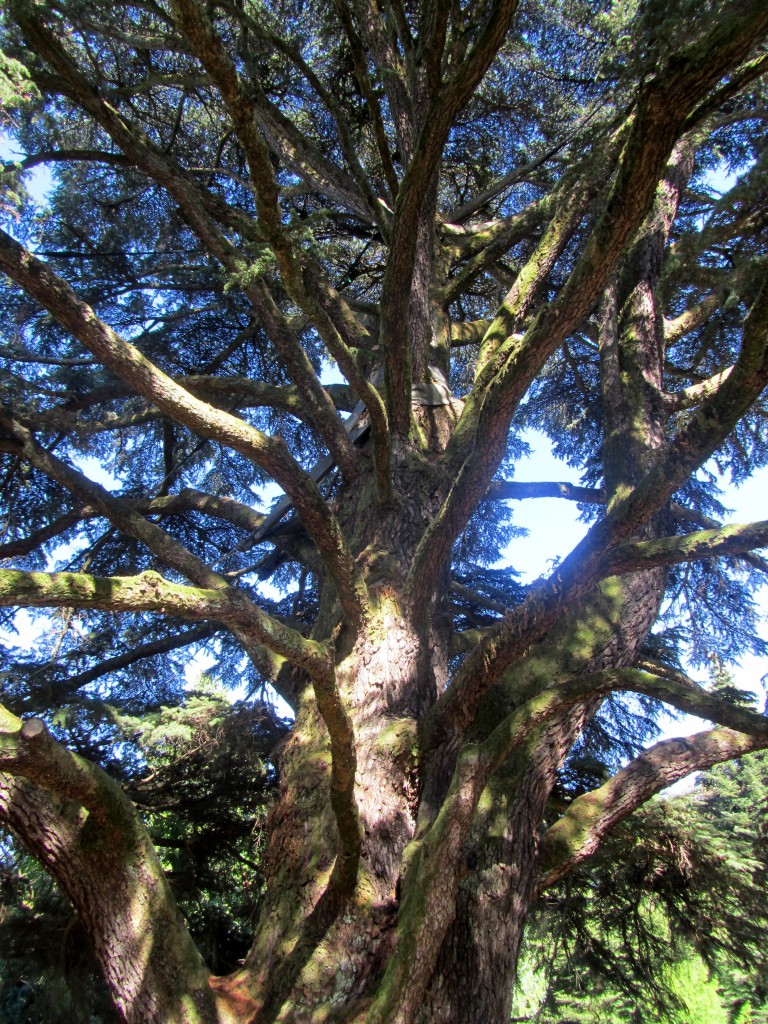

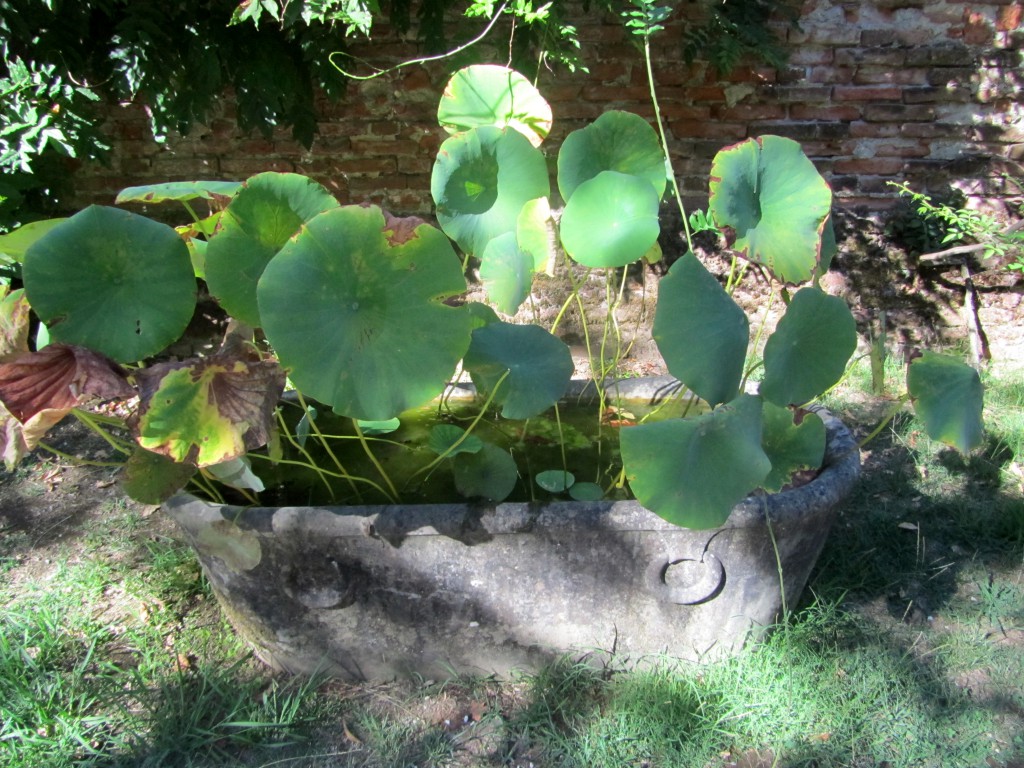
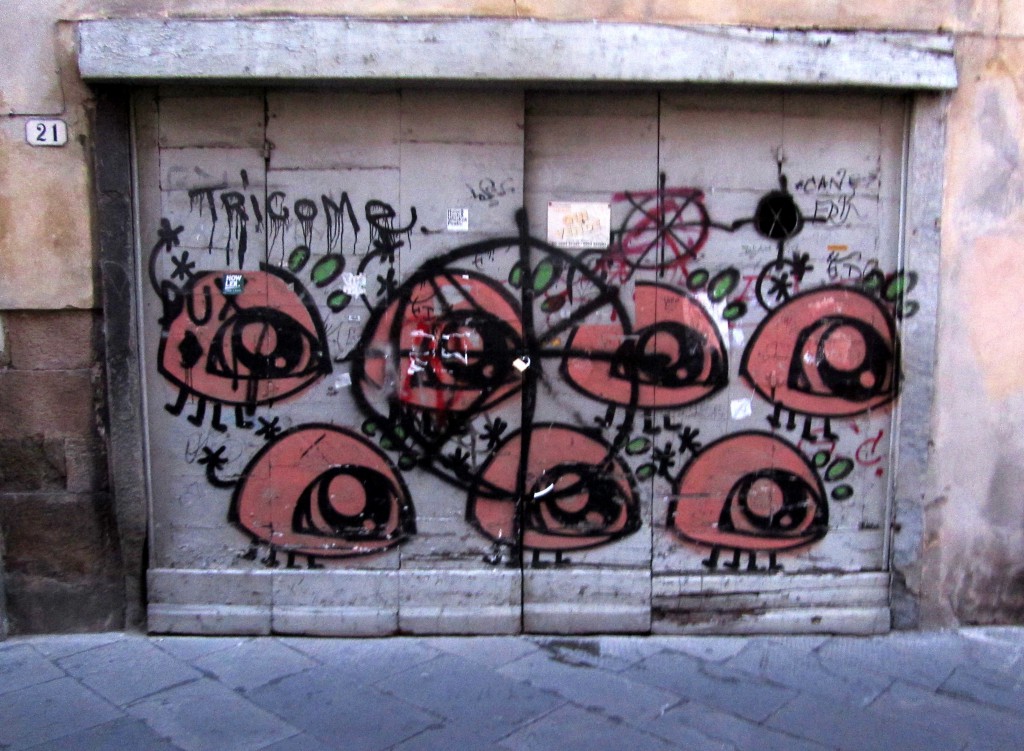
Hi Chris
Thank you for this. Lucca will be my next visit to Italy when we are able to travel. Thank you for your lovely blog . As you know I love Chet Baker too and didn’t know about his stay.